Treatment plan for bipolar. Comprehensive Bipolar Disorder Treatment: Strategies for Bipolar I and II
How are bipolar I and bipolar II treated differently. What medications are used for bipolar disorder treatment. How does psychotherapy help in managing bipolar symptoms. What lifestyle changes can improve bipolar disorder management.
Understanding Bipolar Disorder: Types and Symptoms
Bipolar disorder, formerly known as manic-depression, is a complex mental health condition characterized by extreme mood swings. There are two main types of bipolar disorder: bipolar I and bipolar II. While both types involve fluctuations between manic (or hypomanic) and depressive episodes, they differ in severity and duration of symptoms.
Bipolar I Disorder
Bipolar I disorder is characterized by:
- At least one manic episode lasting a week or more
- Possible depressive episodes, typically lasting two weeks or longer
- Potential psychotic features during manic episodes
Bipolar II Disorder
Bipolar II disorder involves:
- At least one hypomanic episode (less severe than full mania)
- At least one major depressive episode
- No full manic episodes
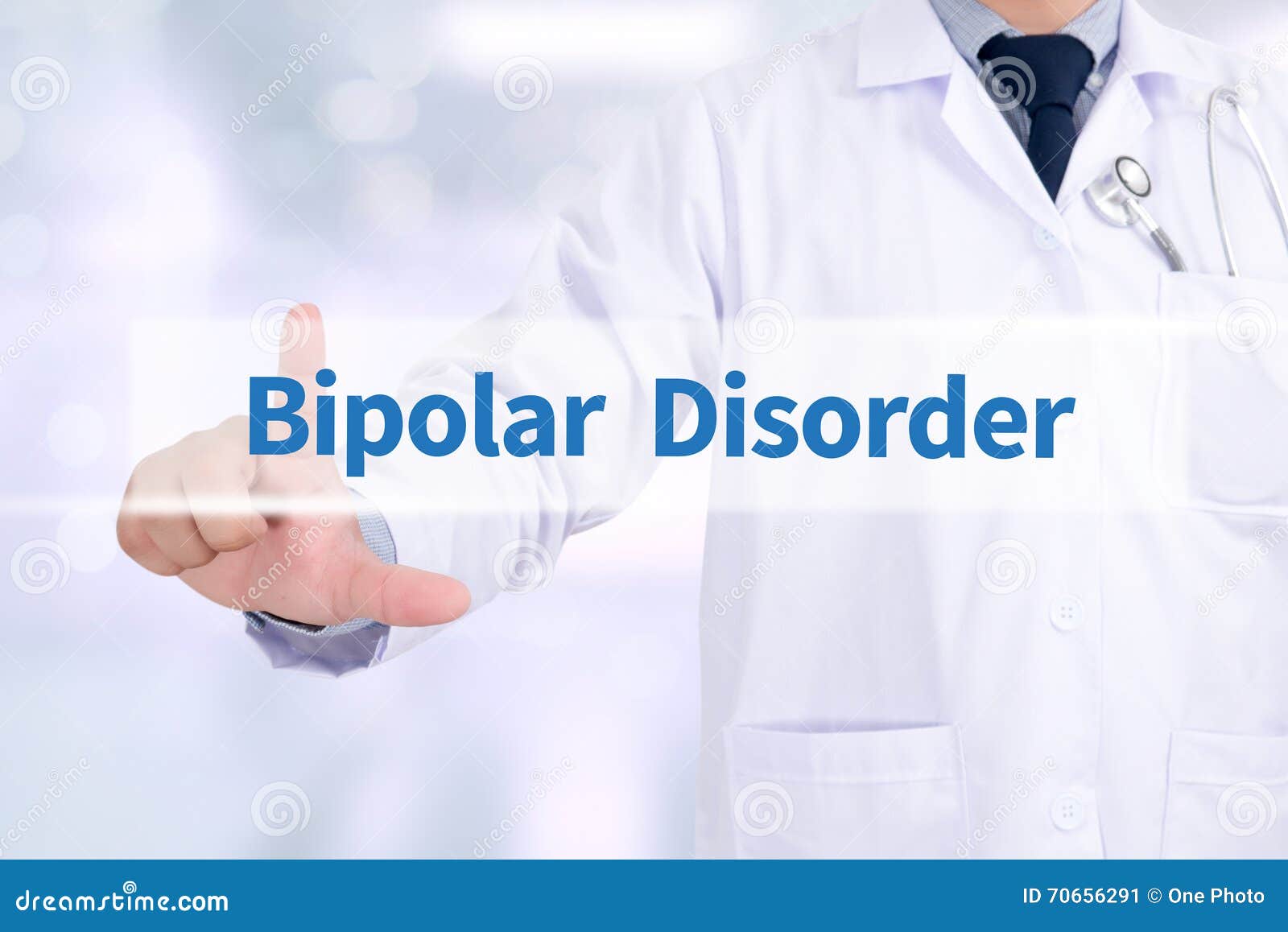
Is bipolar II a milder form of bipolar I. Contrary to popular belief, bipolar II is not a milder form of bipolar I. While the manic episodes in bipolar I can be more severe and potentially dangerous, individuals with bipolar II often experience longer periods of depression, which can significantly impair daily functioning and quality of life.
Medication Strategies for Bipolar Disorder Treatment
The cornerstone of bipolar disorder treatment is medication. The types and doses prescribed are tailored to each individual’s specific symptoms and needs, regardless of whether they have bipolar I or II.
Mood Stabilizers
Mood stabilizers are essential for controlling manic and hypomanic episodes. Common mood stabilizers include:
- Lithium (Lithobid)
- Valproic acid (Depakene)
- Divalproex sodium (Depakote)
- Carbamazepine (Tegretol, Equetro)
- Lamotrigine (Lamictal)
How do mood stabilizers work in bipolar disorder. Mood stabilizers help regulate neurotransmitters in the brain, reducing the frequency and severity of mood episodes. They are particularly effective in preventing manic and hypomanic episodes, but some, like lamotrigine, also have antidepressant properties.

Antipsychotics
Antipsychotic medications may be prescribed alone or in combination with mood stabilizers. Common antipsychotics used in bipolar treatment include:
- Olanzapine (Zyprexa)
- Risperidone (Risperdal)
- Quetiapine (Seroquel)
- Aripiprazole (Abilify)
- Ziprasidone (Geodon)
- Lurasidone (Latuda)
- Cariprazine (Vraylar)
- Asenapine (Saphris)
When are antipsychotics used in bipolar treatment. Antipsychotics are often prescribed during acute manic episodes to quickly reduce symptoms. They can also be used as maintenance treatment to prevent future episodes. Some antipsychotics have mood-stabilizing properties, making them effective for both manic and depressive symptoms.
Antidepressants
Antidepressants may be prescribed to manage depressive episodes in bipolar disorder. However, they are used cautiously due to the risk of triggering manic episodes. Antidepressants are typically prescribed in combination with mood stabilizers or antipsychotics to mitigate this risk.
Combination Medications
Some medications combine the effects of antidepressants and antipsychotics. For example, Symbyax combines fluoxetine (an antidepressant) and olanzapine (an antipsychotic). This combination is FDA-approved for treating depressive episodes in bipolar I disorder.
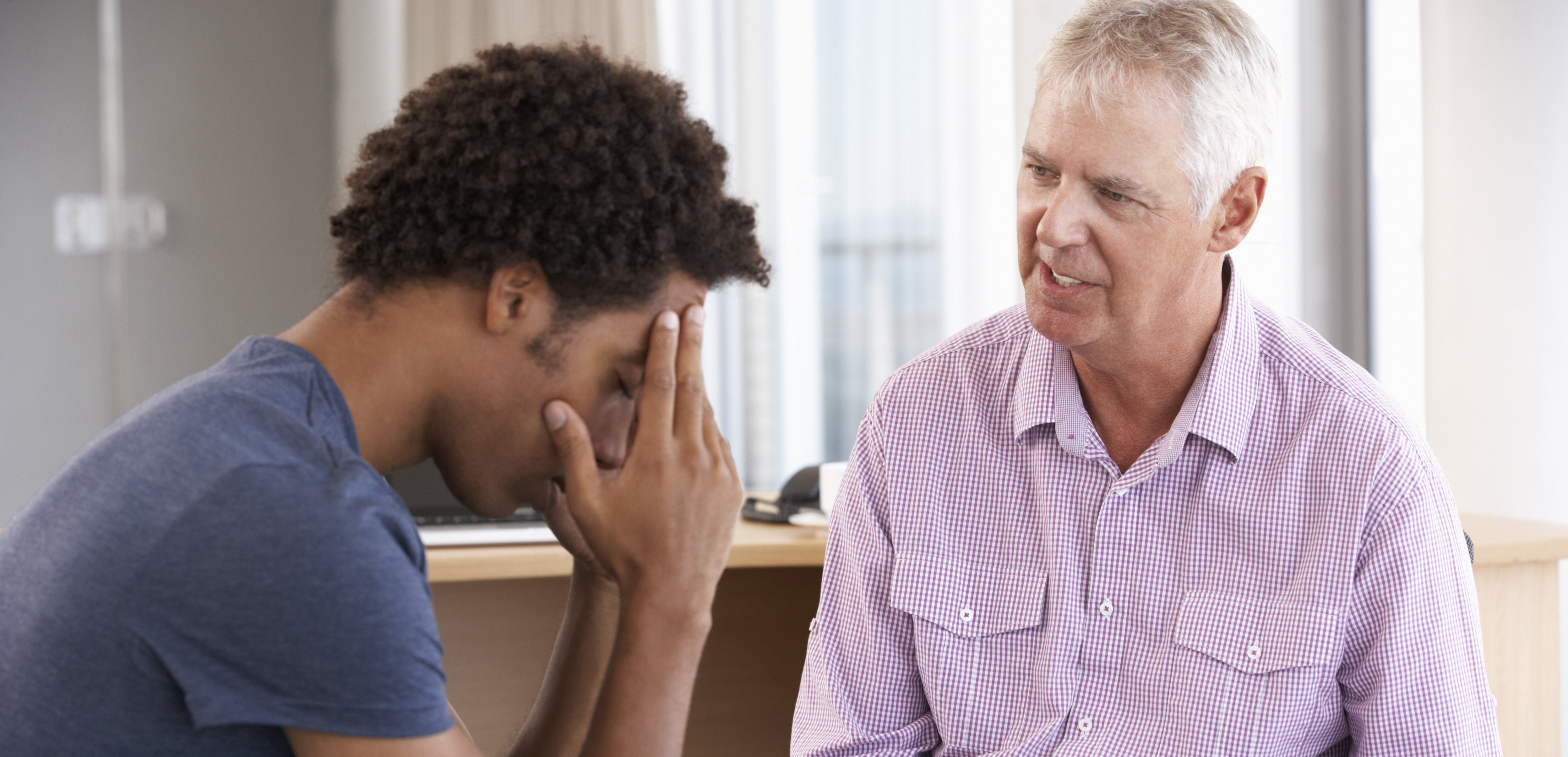
Psychotherapy Approaches in Bipolar Disorder Management
While medication is crucial in bipolar disorder treatment, psychotherapy plays a vital role in managing symptoms and improving overall functioning. Several therapeutic approaches have shown effectiveness in bipolar disorder treatment:
Cognitive Behavioral Therapy (CBT)
CBT is a widely used therapeutic approach for bipolar disorder. It focuses on:
- Identifying and challenging negative thought patterns
- Developing coping strategies for mood symptoms
- Improving problem-solving skills
- Enhancing medication adherence
How does CBT help in bipolar disorder management. CBT helps individuals recognize early warning signs of mood episodes, develop strategies to manage stress, and improve interpersonal relationships. It also addresses common issues in bipolar disorder, such as sleep disturbances and substance use.
Social Rhythm Therapy
Social Rhythm Therapy is a specialized form of psychotherapy for bipolar disorder that focuses on:
- Establishing consistent daily routines
- Regulating sleep-wake cycles
- Managing social relationships and obligations
- Identifying and addressing potential triggers for mood episodes

Why is routine important in bipolar disorder management. Consistent routines help stabilize biological rhythms, which are often disrupted in bipolar disorder. By maintaining regular patterns of sleep, meals, and activities, individuals can reduce the frequency and severity of mood episodes.
Substance Abuse Treatment in Bipolar Disorder
Substance abuse is common among individuals with bipolar disorder, with many turning to alcohol or drugs as a form of self-medication. However, substance use can exacerbate bipolar symptoms and interfere with treatment effectiveness.
Integrated Treatment Approach
An integrated treatment approach addressing both bipolar disorder and substance abuse simultaneously is crucial. This may involve:
- Specialized dual diagnosis treatment programs
- Cognitive-behavioral therapy for substance use
- Motivational enhancement therapy
- Support groups such as Alcoholics Anonymous or Narcotics Anonymous
- Medication-assisted treatment for certain substance use disorders
How does substance abuse impact bipolar disorder treatment. Substance abuse can mask bipolar symptoms, making accurate diagnosis and treatment more challenging. It can also interfere with medication effectiveness and increase the risk of medication side effects. Addressing substance use is essential for successful bipolar disorder management.

Intensive Treatment Programs for Bipolar Disorder
In some cases, more intensive treatment may be necessary to manage bipolar disorder effectively. This can include:
Outpatient Programs
Intensive outpatient programs (IOPs) provide structured treatment while allowing individuals to maintain their daily responsibilities. These programs typically involve:
- Group therapy sessions
- Individual counseling
- Medication management
- Psychoeducation about bipolar disorder
- Skill-building workshops
Partial Hospitalization Programs (PHP)
PHPs offer a higher level of care than outpatient treatment but do not require overnight stays. They usually involve:
- Daily treatment sessions (5-7 days per week)
- Intensive therapy and medication management
- Structured activities and group sessions
- Crisis intervention when needed
Inpatient Hospitalization
In severe cases, inpatient hospitalization may be necessary. This is typically recommended when:
- There is a risk of harm to self or others
- Symptoms are severe and cannot be managed safely at home
- Medication adjustments require close monitoring
- A stable environment is needed to establish symptom control

When is hospitalization necessary for bipolar disorder. Hospitalization may be required during acute manic or depressive episodes that pose safety risks or when outpatient treatment has not been effective in stabilizing symptoms. The goal of hospitalization is to provide a safe environment for rapid symptom stabilization and treatment adjustment.
Self-Management Strategies for Bipolar Disorder
While professional treatment is essential, self-management strategies play a crucial role in long-term bipolar disorder management. These strategies can help individuals maintain stability and improve overall quality of life.
Sleep Hygiene
Maintaining a consistent sleep schedule is vital for mood stability in bipolar disorder. Good sleep hygiene practices include:
- Going to bed and waking up at the same time every day
- Creating a relaxing bedtime routine
- Avoiding caffeine and electronics before bedtime
- Keeping the bedroom cool, dark, and quiet
Healthy Diet and Exercise
A balanced diet and regular physical activity can significantly impact mood and overall well-being. Recommendations include:
- Eating a diet rich in fruits, vegetables, whole grains, and lean proteins
- Limiting processed foods and sugar intake
- Engaging in at least 30 minutes of moderate exercise most days of the week
- Finding enjoyable physical activities to maintain motivation
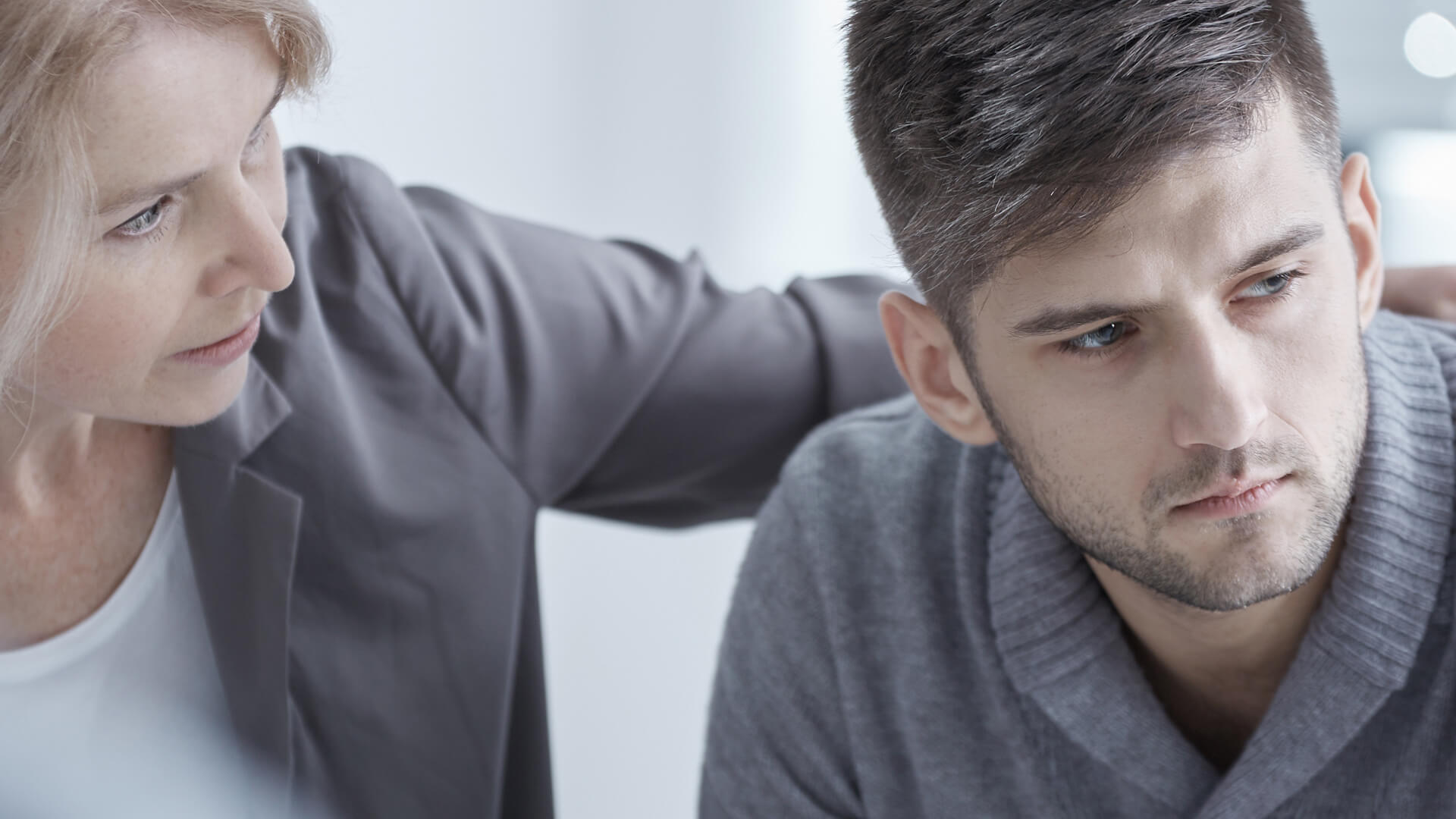
Stress Management
Stress can trigger mood episodes in bipolar disorder. Effective stress management techniques include:
- Mindfulness meditation
- Deep breathing exercises
- Progressive muscle relaxation
- Engaging in hobbies and enjoyable activities
- Setting realistic goals and expectations
Mood Tracking
Regularly monitoring mood and symptoms can help individuals:
- Identify early warning signs of mood episodes
- Recognize patterns and triggers
- Communicate more effectively with healthcare providers
- Make informed decisions about treatment adjustments
How can mood tracking improve bipolar disorder management. Mood tracking allows individuals to become more aware of their symptoms and patterns, enabling them to take proactive steps to prevent or mitigate mood episodes. It also provides valuable information for healthcare providers to optimize treatment plans.
The Importance of Ongoing Care and Medication Management
Successful bipolar disorder treatment requires ongoing care and regular medication management. This involves:

Regular Check-ups
Scheduling regular appointments with a psychiatric care provider allows for:
- Monitoring of symptom progression
- Assessment of medication effectiveness
- Adjustment of treatment plans as needed
- Early intervention if symptoms worsen
Medication Adherence
Consistently taking prescribed medications is crucial for maintaining mood stability. Strategies to improve medication adherence include:
- Using pill organizers or smartphone apps as reminders
- Educating oneself about the importance of each medication
- Discussing side effects and concerns with healthcare providers
- Developing a routine for taking medications
Open Communication
Maintaining open communication with healthcare providers is essential for optimal treatment outcomes. This involves:
- Reporting any changes in symptoms or side effects
- Discussing concerns about medications or treatment plans
- Informing providers about any major life changes or stressors
- Seeking help promptly if experiencing suicidal thoughts or severe symptoms

Why is ongoing care important in bipolar disorder treatment. Bipolar disorder is a chronic condition that requires long-term management. Regular check-ups and open communication with healthcare providers ensure that treatment remains effective and can be adjusted as needed to address changing symptoms or life circumstances.
Support Systems and Community Resources for Bipolar Disorder
Building a strong support system and accessing community resources can greatly enhance the management of bipolar disorder. Key components of a comprehensive support network include:
Family and Friends
Educating loved ones about bipolar disorder and involving them in the treatment process can:
- Improve understanding and empathy
- Provide practical support during difficult periods
- Help identify early warning signs of mood episodes
- Encourage treatment adherence
Support Groups
Participating in bipolar disorder support groups offers numerous benefits:
- Sharing experiences with others who understand the challenges
- Learning coping strategies from peers
- Reducing feelings of isolation and stigma
- Gaining information about local resources and treatment options

Online Resources
Reputable online resources can provide valuable information and support:
- Educational websites from mental health organizations
- Online support forums and chat groups
- Webinars and virtual workshops on bipolar disorder management
- Apps for mood tracking and symptom management
Vocational Support
Accessing vocational support services can help individuals with bipolar disorder maintain employment and achieve career goals:
- Job coaching and supported employment programs
- Assistance with workplace accommodations
- Guidance on managing disclosure in the workplace
- Career counseling and skill development
How can a strong support system improve outcomes in bipolar disorder. A robust support system provides practical and emotional assistance, helps individuals stay accountable to their treatment plans, and offers a safety net during challenging times. This comprehensive support can lead to better symptom management, improved quality of life, and reduced risk of relapse.
Bipolar treatment: Are bipolar I and bipolar II treated differently?
Treatment for bipolar disorder, formerly called manic-depression, generally involves medications and forms of psychotherapy — whether you have bipolar I or bipolar II. Bipolar II disorder is not a milder form of bipolar I disorder, but a separate diagnosis.
While the manic episodes of bipolar I disorder can be severe and dangerous, individuals with bipolar II disorder can be depressed for longer periods, which can cause significant impairment with substantial consequences.
The types and doses of medications prescribed are based on your particular symptoms. Whether you have bipolar I or II, medications may include:
- Mood stabilizers. You’ll typically need mood-stabilizing medication to control episodes of mania or hypomania, which is a less severe form of mania. Examples of mood stabilizers include lithium (Lithobid), valproic acid (Depakene), divalproex sodium (Depakote), carbamazepine (Tegretol, Equetro, others) and lamotrigine (Lamictal).

- Antipsychotics. Your psychiatric care provider may add an antipsychotic medication such as olanzapine (Zyprexa), risperidone (Risperdal), quetiapine (Seroquel), aripiprazole (Abilify), ziprasidone (Geodon), lurasidone (Latuda), cariprazine (Vraylar) or asenapine (Saphris). Your provider may prescribe some of these medications alone or along with a mood stabilizer.
- Antidepressants. Your provider may add an antidepressant or one of the other medications used to treat bipolar disorder that has antidepressant effects to help manage depression. Because an antidepressant can sometimes trigger a manic episode, it needs to be prescribed along with a mood stabilizer or antipsychotic in bipolar disorder.
- Antidepressant-antipsychotic. The medication Symbyax combines the antidepressant fluoxetine and the antipsychotic olanzapine. It works as a depression treatment and a mood stabilizer. Symbyax is approved by the Food and Drug Administration specifically for the treatment of depressive episodes associated with bipolar I disorder.

In addition to medication for bipolar disorder, other treatment approaches include:
- Psychotherapy. As a key part of treatment, your psychiatric care provider may recommend cognitive behavioral therapy to identify unhealthy, negative beliefs and behaviors and replace them with healthy, positive ones. Other types of therapy also may help, such as social rhythm therapy — establishing a consistent routine for better mood management.
- Substance abuse treatment. Many people with bipolar disorder also have alcohol, tobacco or drug problems. Drugs or alcohol may seem to ease symptoms, but they can actually trigger, prolong or worsen depression or mania. If you have a problem with alcohol or other drugs, tell your provider so that both your substance use and bipolar disorder can be treated.
- Treatment programs. Participation in an outpatient treatment program for bipolar disorder can be very beneficial. However, your provider may recommend hospitalization if your bipolar disorder significantly affects your functioning or safety.

- Self-management strategies. In addition to medications and other types of treatment, successful management of your bipolar disorder includes living a healthy lifestyle, such as getting enough sleep, eating a healthy diet and being physically active. Keeping to a regular schedule, getting involved in social activities and joining a support group may also help. If you need advice in these areas, talk with your provider.
You may need to try different medications or combinations of medications to determine what works best. So it’s important to regularly meet with your psychiatric care provider to see how well your treatment is working. If necessary, your provider may make periodic adjustments to your medication to keep symptoms and side effects under control.
- Bipolar medications and weight gain
Feb. 14, 2018
Show references
- Bipolar and related disorders. In: Diagnostic and Statistical Manual of Mental Disorders DSM-5.
 5th ed. Arlington, Va.: American Psychiatric Association; 2013. http://dsm.psychiatryonline.org. Accessed Dec. 21, 2017.
5th ed. Arlington, Va.: American Psychiatric Association; 2013. http://dsm.psychiatryonline.org. Accessed Dec. 21, 2017. - AskMayoExpert. Bipolar disorder. Rochester, Minn.: Mayo Foundation for Medical Education and Research; 2017. Accessed Dec. 21, 2017.
- Bipolar disorder. National Alliance on Mental Illness. https://www.nami.org/Learn-More/Mental-Health-Conditions/Bipolar-Disorder. Accessed Dec. 21, 2017.
- Bipolar disorder. National Institute of Mental Health. https://www.nimh.nih.gov/health/publications/bipolar-disorder/index.shtml. Accessed Dec. 21, 2017.
- Post RM. Bipolar disorder in adults: Choosing maintenance treatment. https://www.uptodate.com/contents/search. Accessed Dec. 21, 2017.
- Bobo WV, et al. Bipolar disorder in adults: Treating major depression with antidepressants. https://www.uptodate.com/contents/search. Accessed Dec. 21, 2017.
- Bobo WV. The diagnosis and management of bipolar I and bipolar II disorders: Clinical practice update.
 Mayo Clinic Proceedings. 2017;92:1532.
Mayo Clinic Proceedings. 2017;92:1532. - Haynes PL, et al. Social rhythm therapies for mood disorders: An update. Current Psychiatry Reports. 2016;18:75.
- Symbyax (prescribing information). Indianapolis, Ind.: Eli Lilly and Co.; 2017. https://www.accessdata.fda.gov/drugsatfda_docs/label/2017/021520s042lbl.pdf. Accessed Dec. 21, 2017.
- Hall-Flavin DK (expert opinion). Mayo Clinic, Rochester, Minn. Jan. 22, 2018.
See more Expert Answers
Products and Services
- Newsletter: Mayo Clinic Health Letter — Digital Edition
- Book: Mayo Clinic Family Health Book, 5th Edition
.
Treatments for Bipolar Disorder: CBT, IPSRT, and More
Medication isn’t the only effective treatment for bipolar disorder. Individuals with this disease may also benefit from psychosocial treatment, experts say.
“The first line of intervention for bipolar disorder is medication,” says Simon Rego, PsyD, chief psychologist at Montefiore Medical Center and associate professor of Psychiatry and Behavioral Sciences at Albert Einstein College of Medicine in New York City. “But some patients with bipolar disorder may have trouble complying with medication and/or dealing with the consequences of the disorder.” This is where psychosocial treatments can make a difference, he adds.
“But some patients with bipolar disorder may have trouble complying with medication and/or dealing with the consequences of the disorder.” This is where psychosocial treatments can make a difference, he adds.
Psychosocial treatment doesn’t preclude the need for medication. Long-lasting injectable antipsychotic medications now are available that have some potential advantages for those who take them: early identification of non-adherence to medication, no need to remember to take medication every day, and reduced relapse frequency and rehospitalization rates. The indication for these medications (such as aripiprazole, olanzapine, paliperidone and risperidone) is for schizophrenia, however. Speak to your healthcare provider to learn more.
Psychosocial treatment can not only improve a patient’s adherence to medication but can increase their understanding of the illness, says David Roane, MD, chairman of the Department of Psychiatry at Lenox Hill Hospital in New York City. “A person with bipolar may lose their job or their relationships with other people,” Dr. Roane says. “Psychosocial treatments can help them readjust.”
Roane says. “Psychosocial treatments can help them readjust.”
Here is a rundown of some psychosocial treatments that can be beneficial.
Cognitive Behavioral Therapy
Cognitive behavioral therapy (CBT), which involves trying to change your patterns of thinking, is effective for bipolar disorder, according to the American Psychological Association. Strategies that are used in CBT include role-playing to get ready for interactions that could be problematic, facing fears directly rather than practicing avoidance, and learning techniques to calm and relax the mind and body.
Research suggests that adding cognitive-behavioral therapy to a treatment plan can improve the outcome of bipolar disorder, according to the American Psychological Association. 1
A good treatment outcome is one in which the mood episodes are stabilized and the patient is equipped with the cognitive and behavioral skills necessary to become more aware of triggers and how to manage them more effectively, Dr. Rego says. “In the case of Bipolar 1 Disorder, we may also measure a good outcome by a decrease in hospitalizations as well as a reengagement in work, better interpersonal relationships, and an overall improvement in the quality of life,” he explains.
Rego says. “In the case of Bipolar 1 Disorder, we may also measure a good outcome by a decrease in hospitalizations as well as a reengagement in work, better interpersonal relationships, and an overall improvement in the quality of life,” he explains.
“I believe that CBT is helpful,” says Scott Krakower, DO, assistant unit chief, psychiatry, Zucker Hillside Hospital in Glen Oaks, New York, “It’s effective with both adolescents and adults. There is a mindfulness component to this form of therapy that is also useful to patients.”
CBT can help a person with bipolar to recognize the warning signs of a mood change and can help them learn to change unhealthy patterns of behavior, Dr. Krakower explains.
Article continues below
Concerned about Bipolar Disorder?
Take our 2-minute Bipolar quiz to see if you may benefit from further diagnosis and treatment.
Take Bipolar Quiz
Interpersonal and Social Rhythm Therapy (IPSRT)
IPSRT, an adjunctive therapy for individuals with mood disorders, outlines techniques to improve medication adherence, manage stressful life events, and reduce disruptions in social rhythms. With this form of therapy, patients learn skills that can help them protect themselves against the development of future episodes. Managing the patient’s symptoms and improving his interpersonal relations is the primary focus of IPSRT.
With this form of therapy, patients learn skills that can help them protect themselves against the development of future episodes. Managing the patient’s symptoms and improving his interpersonal relations is the primary focus of IPSRT.
The efficacy of IPSRT for the treatment of bipolar mood episodes has been supported by two large clinical studies, Dr. Rego says. “It can be useful to avoid disruptions in social rhythm,” he says. “The term, a disruption in social rhythm, sounds fancy, but it really just means any change to our regular daily routines, such as the time we wake up, the times we eat our meals, and the time we go to bed,” Dr. Rego explains.
“It helps individuals with bipolar disorder to understand what worsens and what triggers their illness,” says Stephen Ferrando, MD, director of psychiatry at Westchester Medical Center Health Network (WMCHealth) located in Valhalla, New York.
Individuals with bipolar disorder may not sleep well, and lack of sleep may trigger mania, he says. “Interpersonal and social rhythm therapy is a type of behavioral therapy used to treat the disruption in social circadian rhythms,” Dr. Ferrando explains. “It teaches people the skills that can protect them from other triggers. For instances, IPSRT teaches sleep management skills.”
“Interpersonal and social rhythm therapy is a type of behavioral therapy used to treat the disruption in social circadian rhythms,” Dr. Ferrando explains. “It teaches people the skills that can protect them from other triggers. For instances, IPSRT teaches sleep management skills.”
IPSRT can help a person learn coping skills, Dr. Ferrando says. “The individual learns to manage conflict and thus avoid a manic episode that can do a lot of damage,” he explains.
Family-Focused Therapy
This can also be beneficial for those with bipolar disorder, according to the American Psychological Association.3 Family members are taught to recognize the warning signs of either a manic or a depressive episode, Dr. Roane says, and both family members and patients are taught better communication skills. “A family member can help to identify when a person with bipolar disorder is about to go into a new episode before it happens,” he says, “The family members can tell when a patient is not taking medication, so it’s critical for the family to be involved.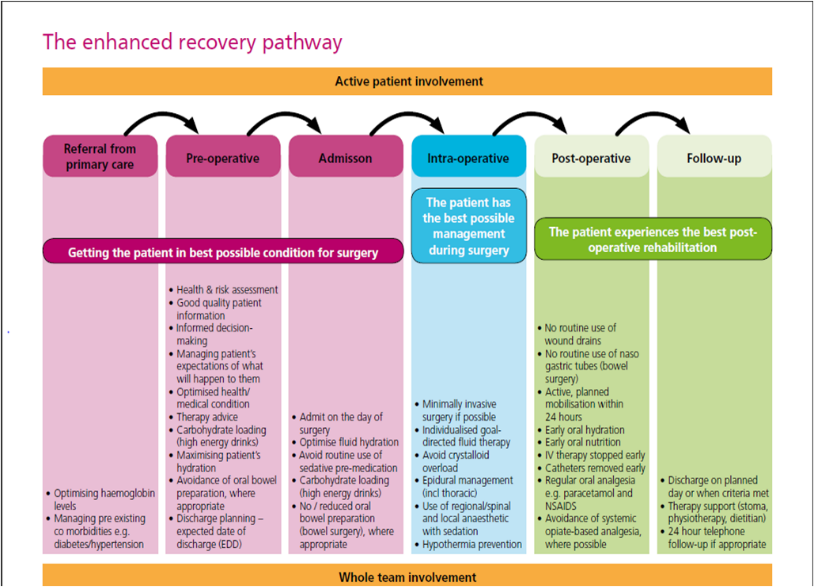 ”
”
Unfortunately, many patients with bipolar disorder tend to not involve their family in their treatment plan, Dr. Roane says. His advice? Bring the family into therapy when the person is doing well. “This works better than when a relapse is happening,” he says.
A core component of family-focused therapy is psychoeducation, Dr. Roane explains. “This means educating people about the illness, the treatments available, and the risk of non-adherence to medication,” he explains.
Family-focused therapy is important because it can often help a patient get back on track with their family. “A lot of times, a patient will recover from a manic episode and tend to minimize or not remember how bad they were,” Dr. Ferrando says, “The family may have been traumatized by what happened. This form of therapy can help a family through this by emphasizing appropriate behavior on the part of the patient.”
Overall, most individuals with bipolar disorder will need treatment with antipsychotic or mood-stabilizing medications.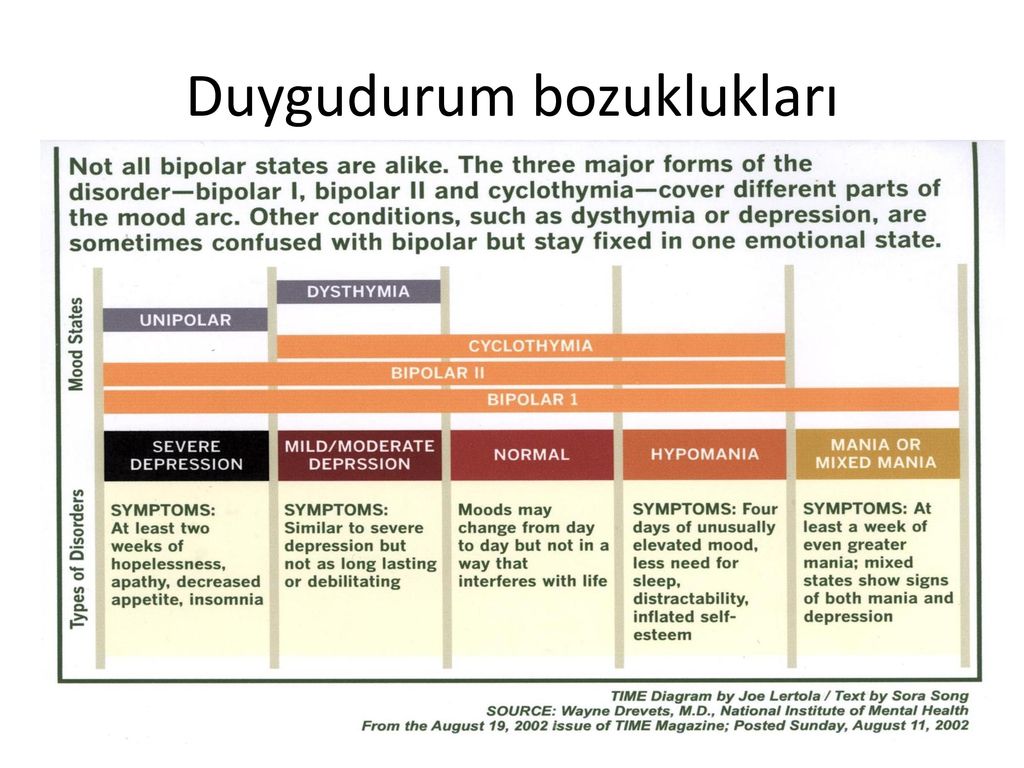 But psychosocial treatments may be added in order to improve the individual’s functioning, according to the American Psychological Association.
But psychosocial treatments may be added in order to improve the individual’s functioning, according to the American Psychological Association.
Article Sources
Footnotes:
- “How do I choose between medication and therapy?” American Psychological Association.
http://www.apa.org/ptsd-guideline/patients-and-families/medication-or-therapy.aspx
- “Interpersonal and Social Rhythm Therapy.” https://www.ipsrt.org/
- “How do I choose between medication and therapy?” American Psychological Association.
http://www.apa.org/ptsd-guideline/patients-and-families/medication-or-therapy.aspx
Sources:
“Cognitive Behavioral Therapy.” American Psychological Association
http://www.apa.org/ptsd-guideline/treatments/cognitive-behavioral-therapy.aspx
“Social Rhythm Therapies for Mood Disorders: an Update.” 24 June 2016. Current Psychiatry Reports. https://www.ncbi.nlm. nih.gov/pmc/articles/PMC4919368/
nih.gov/pmc/articles/PMC4919368/
“Long-acting injectable anti-psychotics: a practical guide for prescribers.” Psychopharmacology Institute. https://psychopharmacologyinstitute.com/antipsychotics/long-acting-injectable-antipsychotics-a-practical-guide-for-prescribers/
Last Updated: May 21, 2021
Bipolar Disorder: Treatment and Care
The best treatment for bipolar disorder is a combination of medication and counseling. Doctors often treat the mania symptoms with one set of drugs, and use other drugs to treat depression. Certain drugs are also used for “maintenance” — to maintain a steady mood over time.
Medical Care
- What Kind of Doctor Treats Bipolar Disorder?
There are many medications for treating bipolar disorder, so a psychiatrist, who is best qualified to identify which drugs work best for a specific patient, should oversee treatment.
- Bipolar Treatment Options
Bipolar disorder is treated with three main classes of medication: mood stabilizers, antipsychotics, and antidepressants.

- Medication Options for Bipolar Disorder
Finding the right bipolar medication regimen can be challenging. For most people with bipolar disorder, two or more medications are used in combination to address the varied symptoms. Find information here about coping with side effects and tips for sticking to your treatment plan.
- Bipolar Medication Tips
If you have bipolar disorder, you may need to take medication indefinitely and possibly for the rest of your life.
- Tricyclic Antidepressants
Tricyclic antidepressants work by increasing activity of the brain chemicals serotonin and norepinephrine, which scientists believe play a role in brain circuits that regulate mood. However, these drugs sometimes increase the risk of mania.
- Antipsychotic Medications
Antipsychotic medications are used as a short-term treatment for bipolar disorder to control psychotic symptoms such as hallucinations, delusions, or mania symptoms.
- Anticonvulsant Medications
Anticonvulsants work by calming hyperactivity in the brain.
 They’re often prescribed for people who have rapid cycling — four or more episodes of mania and depression in a year.
They’re often prescribed for people who have rapid cycling — four or more episodes of mania and depression in a year. - Calcium Channel Blockers for Bipolar Disorder
Calcium channel blockers are typically used to treat high blood pressure or heart problems. Some have also been studied to treat mania or depression in bipolar disorder.
- Benzodiazepines for Bipolar Disorder
Benzodiazepines are not a “core” treatment for mania, but they can rapidly help control certain symptoms — such as restlessness, agitation, or insomnia — until mood-stabilizing drugs can take effect.
- MAOIs for Bipolar Disorder
Monoamine oxidase inhibitors are an extremely potent class of antidepressants that treat depression by preventing the breakdown of serotonin, dopamine, and norepinephrine in the brain.
- Lithium for Bipolar Disorder
Lithium (Eskalith, Lithobid) is one of the most widely used and studied medications for treating bipolar disorder.
- Treatment for Bipolar Depression
While depression episodes are far more common than manias and have a tremendous effect on the lives of patients, there are only a few established treatments for bipolar depression.

- Bipolar Mania Treatment
If you have mania, you’ll probably need to take medicine to bring it quickly under control.
- Treating Bipolar Disorder in Pregnancy
Few studies have been done on bipolar disorder and pregnancy, so not enough is known about the risks of untreated bipolar disorder or the risks and benefits of medications during pregnancy.
- Therapy for Bipolar Disorder
Psychotherapy, or “talk” therapy, is an important part of treatment for bipolar disorder.
- Electroconvulsive Therapy and Bipolar Disorder
Electroconvulsive therapy, also known as ECT or electroshock therapy, is a short-term treatment for severe manic or depressive episodes.
- What Kind of Doctor Treats Bipolar Disorder?
Avoiding Complications
- Bipolar Disorder and Suicide Prevention
If you have bipolar disorder, you may have a higher chance of committing suicide. Watch out for the warning signs and reach out to your family, friends, or health professionals for help.

- Bipolar Suicide Warning Signs
People often talk about suicide before they attempt it, so pay close attention to what they are saying and take them seriously.
- Self-Harm and Bipolar Disorder
Self-injury, often including cutting, self-mutilation, or self-harm, is an attempt to cope with overpowering negative emotions.
- Bipolar Disorder and Suicide Prevention
Bipolar disorder | NAMI: National Alliance on Mental Illness
Proper treatment helps most people living with bipolar disorder control their mood swings and other symptoms. Because bipolar disorder is a chronic illness, treatment must be ongoing. If left untreated, the symptoms of bipolar disorder get worse, so diagnosing it and beginning treatment early is important.
Treating bipolar disorder may include medication, psychotherapy, education, self-management strategies and external supports such as family, friends and support groups. There is no one approach to treating bipolar disorder.
Psychotherapy
Psychotherapy, support groups and psychoeducation about the illness are essential to treating bipolar disorder:
- Cognitive behavioral therapy (CBT) helps change the negative thinking and behavior associated with depression.
 The goal of this therapy is to recognize negative thoughts and to teach coping strategies.
The goal of this therapy is to recognize negative thoughts and to teach coping strategies. - Family-focused therapy helps people with bipolar disorder learn about the illness and carry out a treatment plan.
- Psychotherapy focused on self-care and stress regulation, and helps a person improve self-care, recognize patterns of the onset of the symptoms and to manage stress.
An NIMH clinical trial, the Systematic Treatment Enhancement Program for Bipolar Disorder (STEP-BD) showed that patients taking medications to treat bipolar disorder are more likely to get well faster and stay well if they receive a combination of several intensive psychotherapy interventions. Individuals in the study received three types of psychotherapy, which focused on cognitive strategies, family involvement and stress regulation.
Medications
With the prescribing doctor, work together to review the options for medication. Different types of bipolar disorder may respond better to a particular type.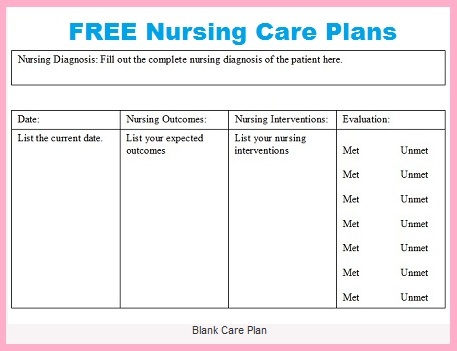 The side effects can vary between medications and it may take time to discover the best medicine.
The side effects can vary between medications and it may take time to discover the best medicine.
Lithium
Lithium (Lithobid, Eskalith) is effective at stabilizing mood and preventing the extreme highs and lows of bipolar disorder. Periodic blood tests are required because lithium can cause thyroid and kidney problems. Common side effects include restlessness, dry mouth and digestive issues. Lithium levels should be monitored carefully to ensure the best dosage and watch for toxicity.
Lithium is used for continued treatment of bipolar depression and for preventing relapse. There is evidence that lithium can lower the risk of suicide but the FDA has not granted approval specifically for this purpose.
Anticonvulsants
Many medications used to treat seizures are also used as mood stabilizers. They are often recommended for treating bipolar disorder. Common side effects include weight gain, dizziness and drowsiness. But sometimes, certain anticonvulsants cause more serious problems, such as skin rashes, blood disorders or liver problems.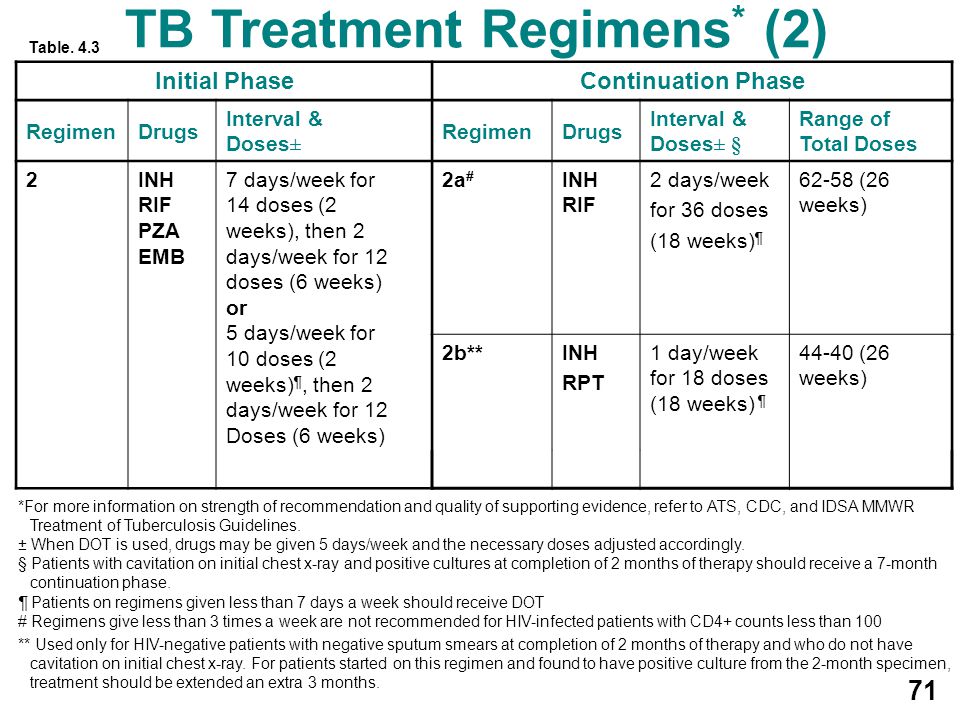
Valproic acid and carbamazepine are used to treat mania. These drugs, also used to treat epilepsy, were found to be as effective as lithium for treating acute mania. They may be better than lithium in treating the more complex bipolar subtypes of rapid cycling and dysphoric mania.
Lamotrigine is used to delay occurrences of bipolar I disorder. Lamotrigine does not have FDA approval for treatment of the acute episodes of depression or mania. Studies of lamotrigine for treatment of acute bipolar depression have produced inconsistent results.
Second-Generation Antipsychotics (SGAs)
SGAs are commonly used to treat the symptoms of bipolar disorder and are often paired with other medications, including mood stabilizers. They are generally used for treating manic or mixed episodes.
SGAs are often prescribed to help control acute episodes of mania or depression. Finding the right medication is not an exact science; it is specific to each person. Currently, only quetiapine and the combination of olanzepine and fluoxetine (Symbax) are approved for treating bipolar depression. Regularly check with your doctor and the FDA website, as side effects can change over time.
Regularly check with your doctor and the FDA website, as side effects can change over time.
Standard Antidepressants
Antidepressants present special concerns when used in treating bipolar disorder, as they can trigger mania in some people. A National Institute of Mental Health study showed that taking an antidepressant also to a mood stabilizer is no more effective that using a mood stabilizer alone for bipolar I. This is an essential area to review treatment risks and benefits.
Other Treatments
Electroconvulsive Therapy (ECT)
In rare instances, ECT can be considered as an intervention for severe mania or depression. ECT involves transmitting short electrical impulses into the brain. Although ECT is a highly effective treatment for severe depression, mania or mixed episodes, it is reserved for specific situations and for symptoms that have not responded to other treatments.
Treatment Considerations for Women and for Children
Women. Women with bipolar disorder who are of childbearing age, or who are considering getting pregnant, need special attention. A complex risk-benefit discussion needs to occur to look at the treatment options available. Some medicines can have risk to the developing fetus and to children in breast milk. However, there is also evidence that being off of all medications increases the likelihood of bipolar symptoms, which itself creates risks to both mother and fetus or baby. Planning ahead and getting good information from your health care team based on your individual circumstances improves your chance of a best outcome.
Women with bipolar disorder who are of childbearing age, or who are considering getting pregnant, need special attention. A complex risk-benefit discussion needs to occur to look at the treatment options available. Some medicines can have risk to the developing fetus and to children in breast milk. However, there is also evidence that being off of all medications increases the likelihood of bipolar symptoms, which itself creates risks to both mother and fetus or baby. Planning ahead and getting good information from your health care team based on your individual circumstances improves your chance of a best outcome.
Children. The diagnosis of bipolar disorder in children has been controversial. Before receiving any psychiatric diagnosis, children must have a comprehensive evaluation of their physical and mental health. Children with bipolar disorder may also have other conditions including attention-deficit hyperactivity disorder, early childhood psychosis, posttraumatic stress disorder, learning disabilities or substance abuse problems.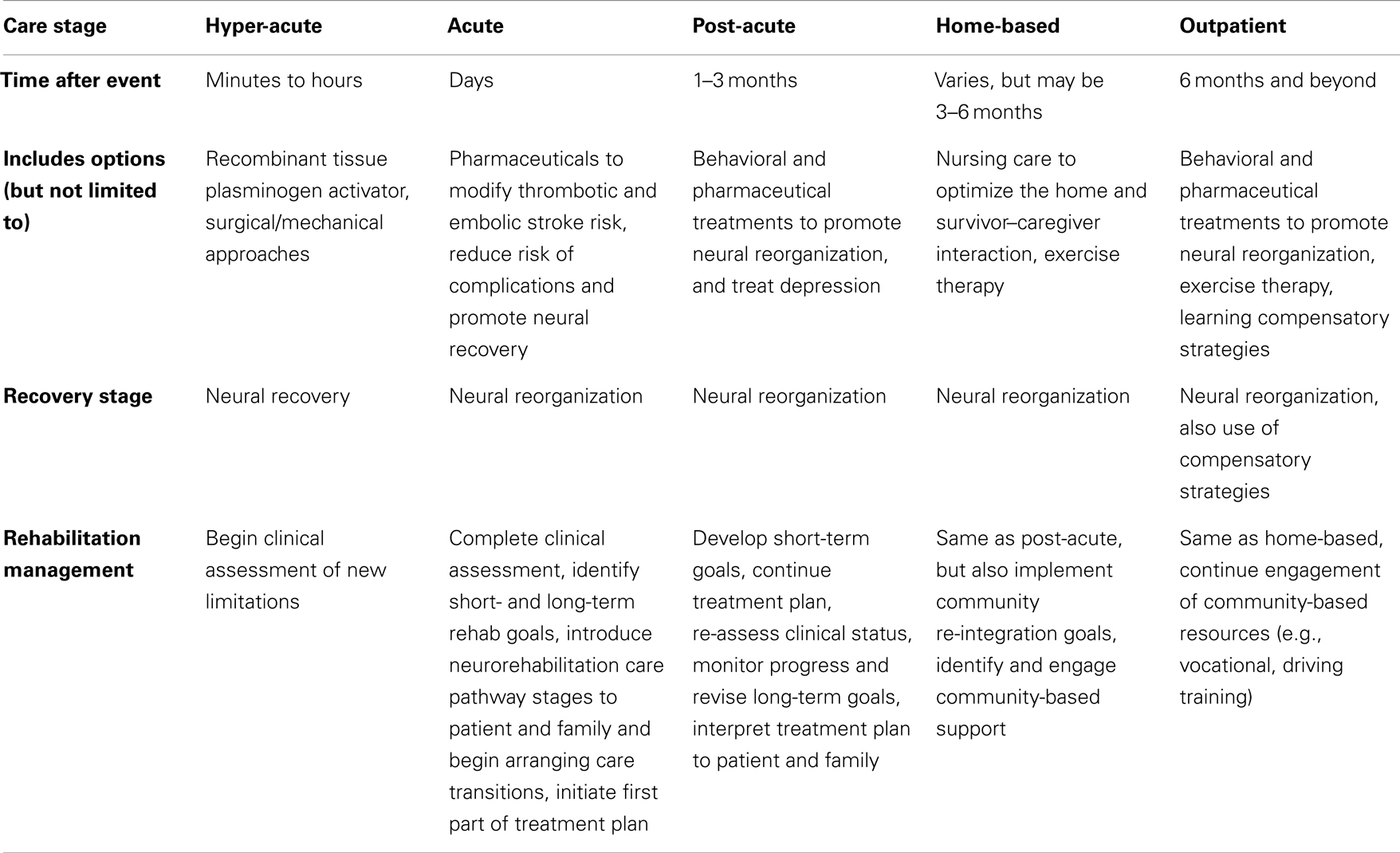 Each of these co-occurring conditions requires a thoughtful and individualized treatment plan. Children with bipolar disorder usually receive psychotherapy and psychosocial interventions before medications are considered.
Each of these co-occurring conditions requires a thoughtful and individualized treatment plan. Children with bipolar disorder usually receive psychotherapy and psychosocial interventions before medications are considered.
The identification of a new mental health condition, Disruptive Mood Dysregulation Disorder (DMDD), could affect how bipolar disorder is diagnosed in children. DMDD better describes children who are intensely irritable, have temper tantrums, but do not have classic symptoms of mania. Early evidence suggests children with DMDD do not have an increased risk of developing bipolar disorder as adults, but they may have other co-occurring illnesses like depression.
Bipolar Disorder | Treatments | Boston Children’s Hospital
For more than 60 years, our Department of Psychiatry and Behavioral Sciences has been a leader in the mental health care of children, adolescents, and their families, delivering leading-edge care, research, and advocacy.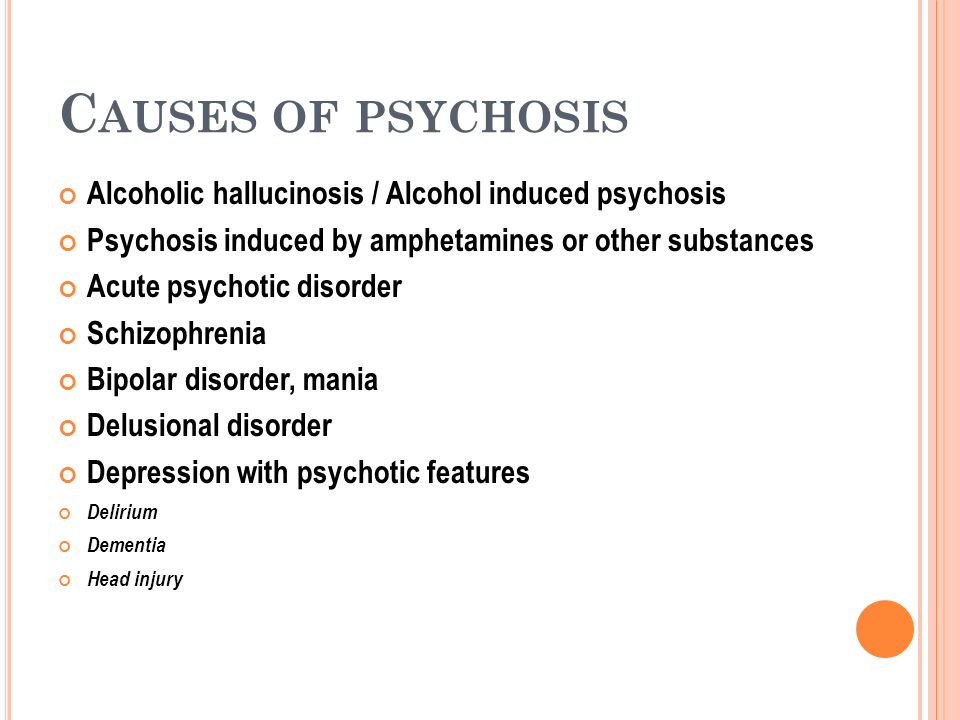
Our experienced psychiatrists, psychologists, social workers, and nurses understand the wide-reaching impact of a child’s bipolar disorder, and we will give your child and family all of the tools you need to manage your unique situation.
How do we treat bipolar disorder?
We typically treat bipolar disorder through a combination of:
- psychotherapy, or “talk therapy”
- medication
- family support
- systems interventions (at school and in the community) as needed
Our approach to mental health care is evidence-based — our treatments have been tested and proven effective through scientific studies, both here at our hospital and by other leading institutions worldwide.
Psychotherapy
Psychotherapy, or “talk therapy,” is designed to help your child learn the best ways to identify and respond to his manic and depressive symptoms when they occur.
Here at Boston Children’s, a mental health clinician will teach your child to:
- anticipate and manage the onset of his mood episodes
- recognize that the “high high” and “low low” feelings he’s experiencing are caused by his bipolar disorder
- change his negative and potentially harmful thoughts, feelings, and behaviors (this process is called cognitive behavioral therapy or CBT)
- learn new and healthy ways of relating to his family members, teachers, and peers
- build his self-esteem and define himself as much more than his illness
- become an active member in their own care “team”
In addition, family counseling can help you and your child’s other loved ones learn how to live with and manage the ups and downs arising from his bipolar disorder.
Medication
Unfortunately, no matter how hard you or your child try, most often it’s not possible to stop mood episodes with talk therapy or willpower alone.
Just like a congenital heart defect or asthma, bipolar disorder is a medical condition, and a biological process or imbalance is responsible for it. In almost every case, the best way to correct this faulty biological process is through medication. Our Psychopharmacology Clinic is devoted to helping children, families, and clinicians incorporate medication into a treatment plan.
Many people with bipolar disorder need to take medication for long periods (over several years) to best combat the illness. Though this isn’t always easy, the benefits of the medication far outweigh the inconvenience and possible side effects.
There are several different medications that can be prescribed for bipolar disorder. Your child’s treating clinician will advise you on the best choice for her and her symptoms. We will carefully go over the specifics of the drug and explain any and all of the potential benefits, alternatives and side effects that you should watch for.
Here are some of the basic facts about the various medications used to manage bipolar disorder: (Please note that the bolded medications have the best evidence of effectiveness and are supported by the U.S. Food and Drug Administration.)
Mood-stabilizing medications
Mood stabilizers are medications that stop the rapid shift from high to low moods and back again. They are particularly useful in preventing manic episodes.
Some of the most common mood stabilizers used to treat bipolar disorder are:
- Lithium
- Valproic acid (Depakene)
- Lamotrigine (Lamictal)
- Carbamazepine (Tegretol)
- Oxcarbazepine (Trileptal)
Antipsychotic medications
Antipsychotic medications can serve two purposes: They can act as mood stabilizers (like the drugs above), and they also can treat children who have mood episodes that are so severe that they experience a break in reality — an inability to distinguish what’s real from what isn’t. This is called a psychosis.
This is called a psychosis.
Antipsychotic medications include:
- Quetiapine (Seroquel)
- Aripiprazole (Abilify)
- Risperidone (Risperdal)
- Olanzapine (Zyprexa)
- Ziprasidone (Geodon)
Antidepressant medications
Antidepressants are a class of medications that can be used to control depressive episodes in bipolar disorder. These are usually prescribed along with a mood stabilizer or antipsychotic — generally not as a standalone, since antidepressants can’t manage the manic symptoms experienced by a child with bipolar disorder and may even activate or worsen mania when used alone.
Commonly prescribed antidepressants include:
- Fluoxetine (Prozac)
- Escilatpram (Lexapro)
- Sertraline (Zoloft)
Since 2004, the U.S. Food and Drug Administration has placed a black box warning label on all antidepressant medications.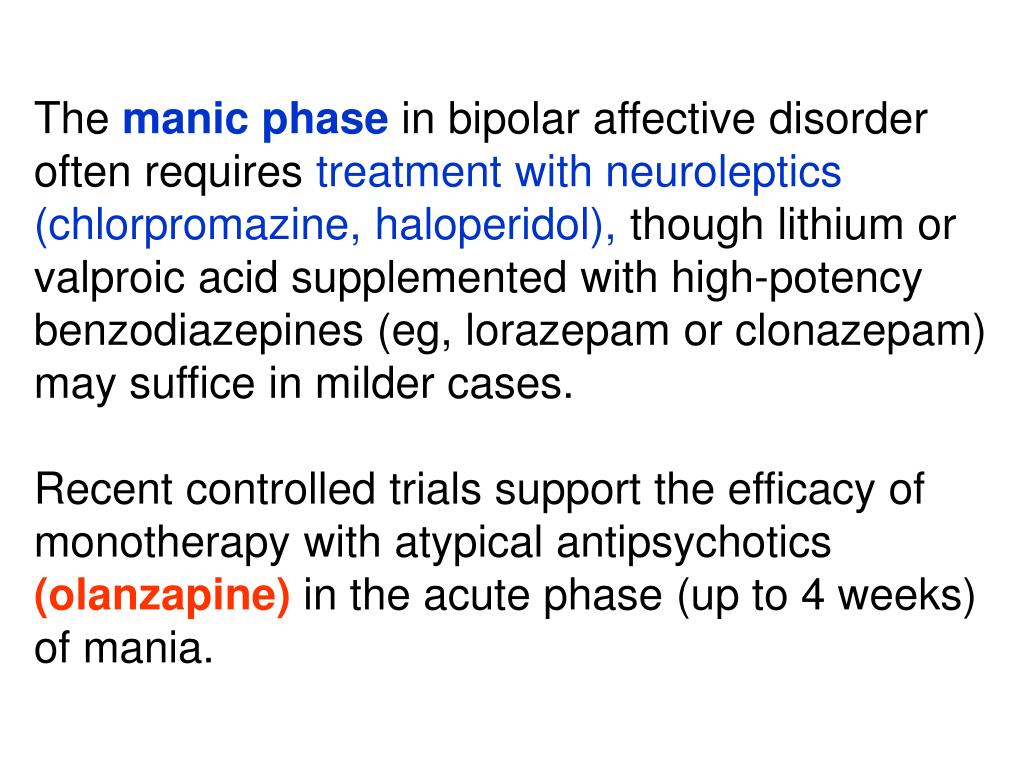 The warning label states, in part:
The warning label states, in part:
“Antidepressants increased the risk of suicidal thinking and behavior (suicidality) in short-term studies in children and adolescents with Major Depressive Disorder (MDD) and other psychiatric disorders. Anyone considering the use of [Drug Name] or any other antidepressant in a child or adolescent must balance this risk with the clinical need. Patients who are started on therapy should be observed closely for clinical worsening, suicidality, or unusual changes in behavior.”
Parents should note that even with the above warning, almost all psychiatrists find that the benefits of antidepressants, when used properly, far outweigh the risks.
Our team has years of experience in managing the use of psychiatric medications in children of all ages and with a wide variety of conditions. We will closely monitor your child for any sign of a negative response to her medication, and are always here to address any concerns you may have.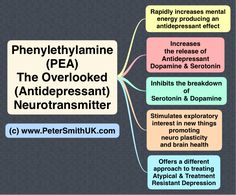
Learn more about psychiatric medications.
Is bipolar disorder ever considered “cured”?
This is not clear at this time. Although the condition responds to treatment in most cases, bipolar disorder is generally seen as a chronic (long-lasting) disease that may come and go for many years.
Your child will need to follow the treatment plan outlined by her care team, and any changes should be carefully discussed among all members of her treatment team.
Coping and support
The ups and downs experienced by a child — and family — living with bipolar disorder can feel overwhelming. In addition to the information provided here, you may find comfort and support from the following resources
Patient and family resources at Boston Children’s
- The Hale Family Center for Families is dedicated to helping families locate the information and resources they need to better understand their child’s particular condition and take part in their care.
 All patients, families, and health professionals are welcome to use the center’s services at no extra cost. The center is open from 8 a.m. to 7 p.m. Monday through Friday and from 9 a.m. to 1 p.m. Saturday. Please call 617-355-6279 for more information.
All patients, families, and health professionals are welcome to use the center’s services at no extra cost. The center is open from 8 a.m. to 7 p.m. Monday through Friday and from 9 a.m. to 1 p.m. Saturday. Please call 617-355-6279 for more information. - Our Department of Spiritual Care (chaplaincy) is a source of spiritual support for parents and family members. Our program includes nearly a dozen clergy members — representing Episcopal, Jewish, Lutheran, Muslim, Roman Catholic, Unitarian, and United Church of Christ traditions — who will listen to you, pray with you, and help you observe your own faith practices during your child’s treatment.
- The Advocating Success for Kids (ASK) Program provides multidisciplinary evaluation, referral, and advocacy services for children under age 14 with behavioral, emotional, learning, or developmental problems, either at home or at school. ASK works with children who receive their primary care either at Boston’s Bowdoin Street Community Health Center, Boston Children’s at Martha Eliot, or at Children’s Hospital Primary Care Center (CHPCC).
 For more information about ASK, please call 617-355-4690.
For more information about ASK, please call 617-355-4690. - The Experience Journal was designed by Boston Children’s psychiatrist-in-chief David DeMaso, MD, and members of his team. This online collection features thoughts, reflections, and advice from kids and caregivers dealing not only with physical illnesses, but also with such issues as mental health conditions.
- Our Integrative Therapies team provides a number of services for hospitalized children, their families and their caregivers, including:
- massage therapy
- acupuncture
- yoga
- therapeutic touch
Visit our “For Patients and Families” page for what you need to know about:
Helpful links
Please note that neither Boston Children’s Hospital nor our Department of Psychiatry and Behavioral Sciences unreservedly endorses all of the information found at the sites listed below. These links are provided as a resource.
Helpful links for parents and families:
Helpful links for teens:
Helpful links for younger children:
Boston Children’s Center for Young Women’s Health, Young Men’s Health websites
Young men and young women may have certain concerns that are specific to their genders, and some concerns that they share. At Boston Children’s, the Center for Young Women’s Health and Young Men’s Health Site offer the latest general and gender-specific information about issues including fitness and nutrition, sexuality and reproductive health, physical development, and emotional well-being.
Bipolar Disorders: A Review – American Family Physician
1. Gitlin MJ,
Swendsen J,
Heller TL,
Hammen C.
Relapse and impairment in bipolar disorder. Am J Psychiatry.
1995;152(11):1635–1640….
2. Judd LL,
Akiskal HS,
Schettler PJ,
et al.
Psychosocial disability in the course of bipolar I and II disorders: a prospective, comparative, longitudinal study. Arch Gen Psychiatry.
Arch Gen Psychiatry.
2005;62(12):1322–1330.
3. American Psychiatric Association. Diagnostic and Statistical Manual of Mental Disorders. 4th ed., text revision. Washington, DC: American Psychiatric Association; 2000.
4. World Health Organization. The global burden of disease: 2004 update. Part 3: disease incidence, prevalence and disability. http://www.who.int/healthinfo/global_burden_disease/2004_report_update/en/. Accessed May 19, 2011.
5. Merikangas KR,
Akiskal HS,
Angst J,
et al.
Lifetime and 12-month prevalence of bipolar spectrum disorder in the National Comorbidity Survey replication [published correction appears in Arch Gen Psychiatry. 2007;64(9):1039]. Arch Gen Psychiatry.
2007;64(5):543–552.
6. American Psychiatric Association.
Practice guideline for the treatment of patients with bipolar disorder (revision). Am J Psychiatry.
2002;159(4 suppl):1–50.
7. Parikh SV,
LeBlanc SR,
Ovanessian MM.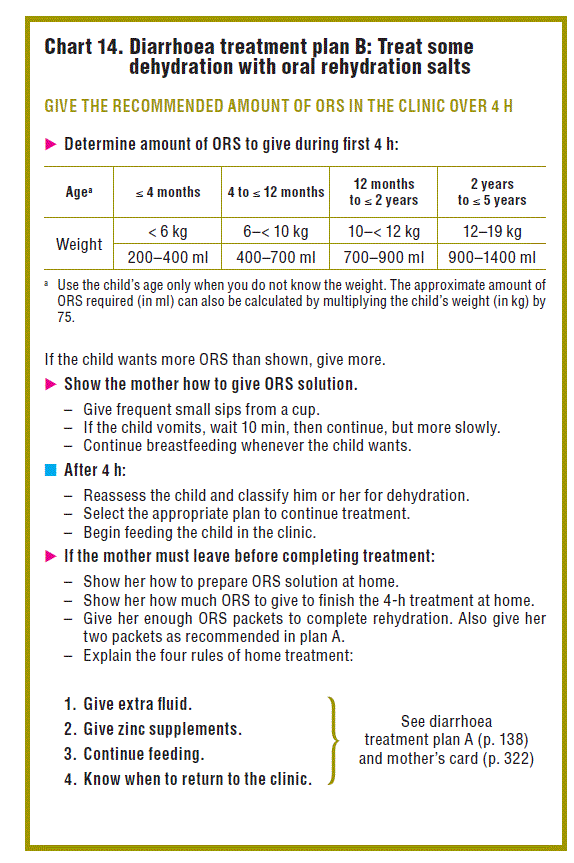
Advancing bipolar disorder: key lessons from the Systematic Treatment Enhancement Program for Bipolar Disorder (STEP-BD). Can J Psychiatry.
2010;55(3):136–143.
8. Fiedorowicz JG,
Solomon DA,
Endicott J,
et al.
Manic/hypomanic symptom burden and cardiovascular mortality in bipolar disorder. Psychosom Med.
2009;71(6):598–606.
9. Novick DM,
Swartz HA,
Frank E.
Suicide attempts in bipolar I and bipolar II disorder: a review and meta-analysis of the evidence. Bipolar Disord.
2010;12(1):1–9.
10. Cassidy F.
Risk factors of attempted suicide in bipolar disorder. Suicide Life Threat Behav.
2011;41(1):6–11.
11. Barnett JH,
Smoller JW.
The genetics of bipolar disorder. Neuroscience.
2009;164(1):331–343.
12. Goldstein BI,
Shamseddeen W,
Axelson DA,
et al.
Clinical, demographic, and familial correlates of bipolar spectrum disorders among offspring of parents with bipolar disorder. J Am Acad Child Adolesc Psychiatry.
J Am Acad Child Adolesc Psychiatry.
2010;49(4):388–396.
13. Proudfoot J, Doran J, Manicavasagar V, Parker G. The precipitants of manic/hypomanic episodes in the context of bipolar disorder: a review. J Affect Disord. 2010. http://www.sciencedirect.com/science/article/pii/S0165032710006804 (subscription required). Accessed September 14, 2011.
14. Van Snellenberg JX,
de Candia T.
Meta-analytic evidence for familial coaggregation of schizophrenia and bipolar disorder. Arch Gen Psychiatry.
2009;66(7):748–755.
15. McGuffin P,
Rijsdijk F,
Andrew M,
Sham P,
Katz R,
Cardno A.
The heritability of bipolar affective disorder and the genetic relationship to unipolar depression. Arch Gen Psychiatry.
2003;60(5):497–502.
16. Luykx JJ,
Boks MP,
Terwindt AP,
Bakker S,
Kahn RS,
Ophoff RA.
The involvement of GSK3beta in bipolar disorder: integrating evidence from multiple types of genetic studies. Eur Neuropsychopharmacol.
Eur Neuropsychopharmacol.
2010;20(6):357–368.
17. Judd LL,
Akiskal HS,
Schettler PJ,
et al.
The long-term natural history of the weekly symptomatic status of bipolar I disorder. Arch Gen Psychiatry.
2002;59(6):530–537.
18. Manning JS.
Tools to improve differential diagnosis of bipolar disorder in primary care. Primary Care Companion J Clin Psychiatry.
2010;12 (suppl 1):17–22.
19. Goldberg JF,
McElroy SL.
Bipolar mixed episodes: characteristics and comorbidities. J Clin Psychiatry.
2007;68(10):e25.
20. U.S. Preventive Services Task Force. Screening and treatment for major depressive disorder in children and adolescents. March 2009. http://www.uspreventiveservicestaskforce.org/uspstf09/depression/chdeprrs.htm. Accessed September 14, 2011.
21. Zimmerman M,
Galione JN,
Chelminski I,
Young D,
Ruggero CJ.
Performance of the Bipolar Spectrum Diagnostic Scale in psychiatric outpatients. Bipolar Disord.
Bipolar Disord.
2010;12(5):528–538.
22. Gaynes BN,
DeVeaugh-Geiss J,
Weir S,
et al.
Feasibility and diagnostic validity of the M-3 checklist: a brief, self-rated screen for depressive, bipolar, anxiety, and post-traumatic stress disorders in primary care. Ann Fam Med.
2010;8(2):160–169.
23. Zimmerman M,
Galione JN,
Ruggero CJ,
et al.
Performance of the mood disorders questionnaire in a psychiatric outpatient setting. Bipolar Disord.
2009;11(7):759–765.
24. Family Practice Notebook. Mania secondary causes. http://www.fpnotebook.com/Psych/Bipolar/MnScndryCs.htm. Accessed September 14, 2011.
25. Family Practice Notebook. Bipolar disorder. http://www.fpnotebook.com/Psych/Bipolar/BplrDsrdr.htm. Accessed September 14, 2011.
26. Berk M,
Brnabic A,
Dodd S,
et al.
Does stage of illness impact treatment response in bipolar disorder? Empirical treatment data and their implication for the staging model and early intervention. Bipolar Disord.
Bipolar Disord.
2011;13(1):87–98.
27. Yatham LN,
Kennedy SH,
Schaffer A,
et al.
Canadian Network for Mood and Anxiety Treatments (CANMAT) and International Society for Bipolar Disorders (ISBD) collaborative update of CANMAT guidelines for the management of patients with bipolar disorder: update 2009. Bipolar Disord.
2009;11(3):225–255.
28. Macritchie K,
Geddes JR,
Scott J,
Haslam D,
de Lima M,
Goodwin G.
Valproate for acute mood episodes in bipolar disorder. Cochrane Database Syst Rev.
2003;(1):CD004052.
29. Bowden CL,
Calabrese JR,
Ketter TA,
Sachs GS,
White RL,
Thompson TR.
Impact of lamotrigine and lithium on weight in obese and nonobese patients with bipolar I disorder. Am J Psychiatry.
2006;163(7):1199–1201.
30. Kessing LV,
Forman JL,
Andersen PK.
Does lithium protect against dementia? Bipolar Disord.
2010;12(1):87–94.
31. Castle D,
White C,
Chamberlain J,
et al.
Group-based psychosocial intervention for bipolar disorder: randomised controlled trial. Br J Psychiatry.
2010;196(5):383–388.
32. Sullivan AE,
Miklowitz DJ.
Family functioning among adolescents with bipolar disorder. J Fam Psychol.
2010;24(1):60–67.
33. Morriss RK,
Faizal MA,
Jones AP,
Williamson PR,
Bolton C,
McCarthy JP.
Interventions for helping people recognise early signs of recurrence in bipolar disorder. Cochrane Database Syst Rev.
2007;(1):CD004854.
34. Ostacher MJ,
Lebeau RT,
Perlis RH,
et al.
Cigarette smoking is associated with suicidality in bipolar disorder. Bipolar Disord.
2009;11(7):766–771.
35. Cipriani A,
Rendell JM,
Geddes JR.
Haloperidol alone or in combination for acute mania. Cochrane Database Syst Rev.
2006;(3):CD004362.
36. Rendell JM,
Gijsman HJ,
Keck P,
Goodwin GM,
Geddes JR.
Olanzapine alone or in combination for acute mania. Cochrane Database Syst Rev.
2003;(3):CD004040.
37. Rendell JM,
Gijsman HJ,
Bauer MS,
Goodwin GM,
Geddes GR.
Risperidone alone or in combination for acute mania. Cochrane Database Syst Rev.
2006;(1):CD004043.
38. Scherk H,
Pajonk FG,
Leucht S.
Second-generation antipsychotic agents in the treatment of acute mania: a systematic review and meta-analysis of randomized controlled trials. Arch Gen Psychiatry.
2007;64(4):442–455.
39. Calabrese JR,
Keck PE Jr,
Macfadden W,
et al.
A randomized, double-blind, placebo-controlled trial of quetiapine in the treatment of bipolar I or II depression. Am J Psychiatry.
2005;162(7):1351–1360.
40. Van Lieshout RJ,
MacQueen GM.
Efficacy and acceptability of mood stabilisers in the treatment of acute bipolar depression: systematic review. Br J Psychiatry.
2010;196(4):266–273.
41. Post RM,
Altshuler LL,
Leverich GS,
et al.
Mood switch in bipolar depression: comparison of adjunctive venlafaxine, bupropion and sertraline [published correction appears in Br J Psychiatry. 2006;189:569]. Br J Psychiatry.
2006;189:124–131.
42. Zmitek A.
Trazodone-induced mania. Br J Psychiatry.
1987;151:274–275.
43. Burgess S,
Geddes J,
Hawton K,
Townsend E,
Jamison K,
Goodwin G.
Lithium for maintenance treatment of mood disorders. Cochrane Database Syst Rev.
2001;(3):CD003013.
44. Cipriani A,
Rendell JM,
Geddes J.
Olanzapine in long-term treatment for bipolar disorder. Cochrane Database Syst Rev.
2009;(1):CD004367.
45. Stoll AL,
Severus WE,
Freeman MP,
et al.
Omega 3 fatty acids in bipolar disorder: a preliminary double-blind, placebo-controlled trial. Arch Gen Psychiatry.
1999;56(5):407–412.
46. Milano W,
Grillo F,
Del Mastro A,
et al.
Appropriate intervention strategies for weight gain induced by olanzapine: a randomized controlled study. Adv Ther.
2007;24(1):123–134.
47. Gardner DM,
Murphy AL,
O’Donnell H,
Centorrino F,
Baldessarini RJ.
International consensus study of antipsychotic dosing. Am J Psychiatry.
2010;167(6):686–693.
48. Lamictal (lamotrigine) [package insert]. Durham, N.C.: GlaxoSmithKline; 2010. http://us.gsk.com/products/assets/us_lamictal.pdf. Accessed September 16, 2010.
49. Zyprexa (olanzepine) [package insert]. Indianapolis, Ind.: Eli Lilly;. 2011. http://www.zyprexa.com/Pages/index.aspx. Accessed September 16, 2010.
50. Ativan (lorazepam) [package insert] Kirkland, Quebec, Canada: Pfizer; 2010. http://www.pfizer.ca/en/our_products/products/monograph/279. Accessed September 16, 2010.
51. Tegretol (carbamazepine) [package insert]. East Hanover, N.J.: Novartis; 2011. http://www.pharma.us.novartis.com/product/pi/pdf/tegretol.pdf. Accessed September 14, 2011.
52. Van Amelsvoort T,
Bakshi R,
Devaux CB,
Schwabe S.
Hyponatremia associated with carbamazepine and oxcarbazepine therapy: a review. Epilepsia.
1994;35(1):181–188.
53. Depakote (divalproex sodium) [package insert]. Chicago, Ill.: Abbott Laboratories; 2009. http://www.depakoteer.com/prescribing-information.cfm. Accessed September 14, 2011.
54. Kirov G,
Tredget J,
John R,
Owen MJ,
Lazarus JH.
A cross-sectional and a prospective study of thyroid disorders in lithium-treated patients. J Affect Disord.
2005;87(2–3):313–317.
55. Justo LP,
Soares BG,
Calil HM.
Family interventions for bipolar disorder. Cochrane Database Syst Rev.
2007;(4):CD005167.
56. Miklowitz DJ.
Adjunctive psychotherapy for bipolar disorder: state of the evidence. Am J Psychiatry.
2008;165(11):1408–1419.
The Importance of an Individualized Bipolar Disorder Treatment Plan – Bridges to Recovery
Bipolar disorder, perhaps more so than any other illness, starkly demonstrates that the field of psychiatry is constantly evolving. Rather than acting as a static source of authority, the psychiatric community continuously integrates new learning and philosophies as expertise is gained, refining our understanding of what mental illness looks like and how it is to be treated. Over time, this flexibility has provided the space for multiple articulations of bipolar disorder to be recognized as discrete illnesses.
The term “bipolar disorder” was originally developed in the mid-1900s to differentiate bipolar depression from unipolar depression and to conceptualize bipolar depression and mania as a “unitary illness, reflecting dysregulation along a single dimension.” By 1980, “bipolar disorder” had come to supplant the diagnosis of “manic depression” in the DSM, as it was thought to reflect “the defining feature of mood polarity rather than simply pointing to the consequences of polarity.” Today, no bipolar diagnosis requires the presence of both mania and depression and “bipolar disorder” itself no longer defines a specific illness, but acts as an umbrella term for a number of bipolar disorder subtypes:
Bipolar I Disorder
Bipolar I is the best known of bipolar types, but is frequently misunderstood as “manic depression.” In fact, bipolar I is defined solely by the presence of a manic or mixed episode, which may or may not be accompanied by depressive episodes.
Bipolar II Disorder
Unlike bipolar I, a bipolar II diagnosis requires the presence of two separate kinds of mood episodes: hypomania and depression. Because hypomania does not have the acute presentation of mania and because it is often (but not always) experienced as pleasurable, bipolar II is sometimes erroneously thought to be less destructive than bipolar I. However, people with bipolar II disorder tend to have deeper and more prolonged periods of depression while also experiencing more rapid mood switching, which some researchers believe contribute to high rates of suicidality amongst those with the disorder. Many people also suffer from delayed and incorrect treatment after being initially misdiagnosed with unipolar depression.
Cyclothymic Disorder
People with cyclothymic disorder switch between depressive and hypomanic symptoms that lack the severity and persistence of major depressive, full manic, or hypomanic episodes. By definition, symptoms must last for at least two years, with no more than two months between mood episodes. While the episodes themselves never reach the severity necessary to meet depressive or hypomanic diagnostic criteria, the disorder can cause profound distress and instability.
Other Specific Bipolar
Other specific bipolar, formerly known as not otherwise specified (NOS), includes any presentations of the illness that do not meet diagnostic criteria for bipolar I, bipolar II, or cyclothymia. Typically, this is due to falling below the threshold for severity and/or duration of depressive, manic, hypomanic, or mixed episodes. Despite this, other specific bipolar can cause significant instability and seriously impact function.
90,000 Treatment of bipolar personality disorder in Yekaterinburg
Anonymous. Bipolar disorder (manic-depressive psychosis) is a type of affective state in which the patient has a frequent change in pathological symptoms.
There is a combination of hypomanic and depressive symptoms. There are periods of nervous tension and lethargy, as well as some variants of mixed states.
Signs of pathology
The disease is characterized by a phase course.The traditional symptoms of bipolar disorder include:
- unpredictable mood swings. The duration of the phase is on average from 3 months to 2 years;
- development of obsessive, hallucinatory and catatonic disorders;
- the emergence of suicidal thoughts and aspirations.
90,013 violations in social and family life;
It is quite difficult to identify the initial form of the disease. The clinical picture can occur in the presence of smoothed symptoms of manic-depressive psychosis.In such cases, periods of joy and sadness are mild and do not have a significant impact on the patient’s professional activity and social life.
With a further complication of the pathology, patients may be recognized as insane and incapacitated, and receive certain groups of disability.
Where to get treatment for bipolar disorder
The private narcological clinic “Elizar-Med” accepts patients diagnosed with manic-depressive psychosis for examination, selection and application of effective therapeutic methods of treatment.
The specific tactics of care are developed by a certified physician, depending on the clinical picture of the disease and the general condition of the patient. During the treatment of bipolar disorder, your doctor uses:
- pharmacotherapy. Anti-manic and antidepressant drugs are introduced to relieve acute manifestations of the disease. Antipsychotics, antidepressants and substances containing lithium can reduce the frequency of suicidal thoughts, eliminate excessive aggressiveness and impulsivity.The treatment regimen and prevention of relapse in bipolar personality disorder is determined on an individual basis;
- psychotherapy. Patients are taught the basic skills of managing pathological symptoms. The doctor acquaints the patient with methods of increasing stress resistance, dealing with painful family conflicts and other unfavorable factors.
Do not delay starting treatment! Make an appointment with a qualified specialist at the number +7 (343) 200-55-02 or +7 (908) 905-8-335 .
There are contraindications, specialist advice is required.
90,046 90,000 BAR – treatment, consultation, assistance. Empathy
Such a change of states can occur directly one after another or through intervals of even mood, called interphases. At the same time, various variants of mixed states are also not excluded.
Reasons
The causes and mechanisms of bipolar disorder are not fully understood.According to the majority of researchers, disorders in the metabolism of biogenic amines, endocrine shifts, changes in water-salt metabolism, pathology of circadian rhythms, the influence of gender and age, and constitutional characteristics of the organism play a certain role in the onset of the disease. There are also studies proving the role of genetic factors in the occurrence of this disease.
Qualification
In the classification of diseases currently used in Russia (ICD-10), BAR refers to affective disorders and is interpreted as a disorder characterized by two or more episodes of , in which the patient’s mood and level of activity are significantly impaired.These disorders are cases of mood elevation, a surge of energy, increased activity (hypomania or mania) and, accordingly, cases of a drop in mood, a sharp decrease in energy and activity (depression). Repeated episodes of hypomania or mania alone are classified as bipolar. According to the classification of the next revision, coming into force in the near future (ICD-11), there are bipolar disorder type I and bipolar II type . In the American Classification of Mental Disorders (DSM-5), the disorders have similar names: bipolar I disorder and bipolar II disorder.The second type is distinguished by the presence of only hypomanic and depressive episodes, and there are no manic episodes. According to some experts, it is also advisable to single out BAD III, or cyclothymia, which, according to ICD-11, also belongs to the rubric of bipolar disorder. There is also a need to isolate type IV bipolar disorder, in which the hypomanic phase occurs during treatment with antidepressants.
Treatment methods for bipolar disorder
For the treatment of bipolar disorder, both drug therapy and psychotherapy are used .Psychopharmacotherapy is selected individually; sometimes patients are prescribed several drugs of different groups to achieve stable remission. For the treatment of bipolar disorder I and II, as well as for the prevention of the onset of phases, drugs called normotimics are used: in particular, these include lithium preparations, carbamazepine, oxcarbazepine, valproate, lamotrigine. To prevent an exacerbation of the disease, atypical antipsychotics are used, and antidepressants are prescribed to stop the depressive phase.It is necessary to take into account the fact that comorbid disorders are often diagnosed together with bipolar disorder. Therefore, bipolar disorder may occur with schizophrenic spectrum disorder, borderline personality disorder, and other mental illnesses. In any case, the therapy is selected by a psychiatrist depending on the characteristics of the development of the disease and on the tolerance of drugs for each patient individually.
Psychotherapy is also effective in treating bipolar disorder.Various psychotherapeutic techniques are used, which, together with a properly selected drug treatment regimen, in most cases leads to a relatively stable remission and a fairly high standard of living for patients.
How can we help?
If you find yourself with some of the symptoms described, this may indicate the development of a mental disorder. In this case, it is worth contacting a psychiatrist for diagnosis and early treatment.In addition to the face-to-face appointment , we offer the remote consultation service (online) , which is not inferior to a personal meeting in terms of quality. Thus, you can receive qualified assistance from high-level specialists, no matter where you are. |
In our clinic, near the Eastern Administrative District of Moscow, in Reutov, there are specialists who have extensive experience in the treatment of mental disorders.We use the most modern and advanced techniques, we are guided by the principles of evidence-based medicine. Effective assistance and confidentiality of medical secrets are guaranteed.
Production of a new drug for the treatment of schizophrenia and bipolar disorder began in Russia
Gedeon Richter launches production of Reagila (cariprazine) for patients with schizophrenia and bipolar disorder in Russia.The transfer of the full cycle of production of capsules of the drug in four dosages: 1.5 mg, 3 mg, 4.5 and 6 mg was successfully completed on July 1, 2021.
According to the plan, the first commercial batch of the Russian-made Reagil drug, 1.5 mg, will go to distributors’ warehouses in August 2021. The launch of the production of the drug in a dosage of 3 mg is expected in November, and in dosages of 4.5 and 6 mg in early 2022.
“Taking medication on a strict schedule, without interruption, is an integral part of the treatment of diseases such as schizophrenia or bipolar disorder.These diseases are more common than it seems: according to various estimates, bipolar disorder affects from 1.5 to 6% of the population, schizophrenia – about 1%. But behind these figures in Russia there are millions of patients, each of whom has the right to a full, active life. In addition, Russia has been and remains a key market for Gedeon Richter. It is for these reasons that we decided to localize the production of the innovative drug Reagila, which is important for patients, at our Russian site – the GEDEON RICHTER-RUS plant .- said Attila Varadi, Plenipotentiary Representative of Gedeon Richter in Russia.
Kariprazine was registered on the Russian market in 2019 under the trade name Reagila and was originally used in patients with schizophrenia. In June 2021, the Ministry of Health expanded the list of indications for the use of the drug, including such conditions for bipolar disorder in adults as manic or mixed episodes, as well as bipolar depression. In addition to the EU, other European and CIS countries, the drug is sold in Israel, Thailand, Malaysia and Singapore, as well as in some countries of the Middle East.Cariprazine is currently being studied in the United States as an adjunct to antidepressant therapy in adults with major depressive disorder.
Source: Company “Gedeon Richter”
Photo: freepik.com
From 7 to 11 September 2021 in Yalta (Republic of Crimea), the VIII Medical Congress “Topical Issues of Medical Practice” will be held, where leading experts from various fields of medicine will discuss key issues, trends and clinical recommendations.
Learn more here:
Bipolar Spectrum Diagnostic Scale (BSDS) Take online test
Diagnostic scale of the bipolar spectrum
Time limit: 0
0 of 20 tasks completed
Questions:
- 1
- 2
- 3
- 4
- 5
- 6
- 7
- 8
- 9
- 10
- 11
- 12
- 13
- 14
- 15
- 16
- 17
- 18
- 19
- 20
Information
Bipolar Spectrum Diagnostic Scale (abbr.BSDS)
The diagnosis of bipolar disorder (BAD) is very important. The importance is associated with the relatively low detection rate of this disease. Among other things, the diagnosis of bipolar disorder is complicated by the high incidence of comorbidity. This is when bipolar disorder occurs simultaneously with other diseases: anxiety disorders, substance abuse, personality disorders and ADHD, and so on. As a result, it often takes a very long time from the onset of illness to seeking psychiatric help – sometimes up to 10 years.
If you notice in your life regular episodes of pronounced or at least distinct mood swings, as well as excessive affective (emotional) reactions to external causes, take this test. Remember, test results are not a diagnosis. Only a psychiatrist or psychotherapist can diagnose and treat bipolar disorder. However, the test can strengthen your willingness to see a specialist.
Instructions for the test.
1. Read the statements in the first question and select how fully all of these statements describe your experiences and conditions.
2. Re-answer “Yes” or “No” to the statements that are now addressed to you.
You have already taken the test before. You cannot start it again.
Test loading …
You must login or register in order to start the test.
You must complete the following tests to start this one:
Your time:
Time out
You scored 0 out of 0 points (0)
You have nothing to worry about.Your emotional and mental state is not a cause for concern. You have no signs of bipolar spectrum disorder.
Test results indicate a low likelihood of bipolar spectrum disorder. If you suffer from mild bipolar disorder, then most likely it does not affect your usual lifestyle.But at the same time, various stressors, including alcohol abuse or lack of sleep, can trigger a more severe form of the disorder. We recommend that you consult a psychiatrist or psychotherapist. If the diagnosis is confirmed, the specialist will tell you in detail what to do and how to track symptoms, mood and condition. It will definitely improve your quality of life.
Test results indicate a moderate likelihood of bipolar spectrum disorder.We recommend that you visit a psychiatrist or psychotherapist for diagnosis. The specialist will make an accurate diagnosis and provide you with information about bipolar disorder treatment, recovery, and how to track changes in mood. You will have an understanding of the situation, a treatment plan, and contacts with a specialist doctor who can help if signs of hypomania or worsening depressive symptoms appear.
Alas, the test results show a high probability of bipolar spectrum disorder.This condition requires compulsory treatment. We recommend that you immediately contact a psychotherapist or psychiatrist. The specialist will help stop the acute condition and exclude further progression of the disease. BD, as well as other disorders, can be effectively treated! Correct and timely started therapy ensures that your emotional and mental state will return to normal as soon as possible.
- 1
- 2
- 3
- 4
- 5
- 6
- 7
- 8
- 9
- 10
- 11
- 12
- 13
- 14
- 15
- 16
- 17
- 18
- 19
- 20
With the answer
Marked as viewed
Question 1 of 20
Read the statements below and select how fully they describe your experience and situation.
- Some people experience sudden changes in mood / energy levels from time to time.
- These people notice that at times their mood and / or energy levels are very low, and at other times they are very high.
- During recessions, these people often lack energy; Feel the need to stay in bed or need extra sleep lack the motivation to do the things they are supposed to do.
- During such periods, they often gain excess weight.
- During these “recessions” these people often or constantly feel sadness, longing, or are in a state of depression.
- Sometimes during “recessions” they feel hopeless, or even want to die.
- Their ability to perform work or socially function is impaired.
- Usually these “recessions” last for several weeks, but sometimes they only last for a few days.
- People with this pattern of mood swings may experience periods of “normal” mood (between mood swings), during which mood and energy levels are felt as “normal,” and the ability to work and socially function is not impaired.
- They may then again notice a perceptible “jump” or “change” in well-being.
- Their energy grows and grows, and they feel absolutely normal, but during such periods they can “move mountains”: do as many different things as they usually are not able to do.
- Sometimes, during these “uplifting” periods, these people feel as if they have too much energy, they are “overflowing” with their own energy.
- Some during these “ups” periods may feel “on the edge”, very irritable or even aggressive.
- Some people during these “ups” can take on a lot of things at the same time.
- During these “ups”, some people may spend money in ways that lead to problems.
- They may become very talkative, outgoing or hypersexual during these periods.
- Sometimes during periods of “ups” their behavior seems strange or annoying others.
- Sometimes, during periods of “ups”, the behavior of these people can lead to problems at work or problems with the police.
- Sometimes during the “climbs” such people begin to abuse alcohol or uncontrollably take any drugs or even drugs.
Question 2 of 20
Now, please select a Yes or No answer from these statements that are addressed to you:
I experience sudden changes in mood / energy levels from time to time.
Question 3 of 20
I notice that at times my mood and / or energy level is very low, and at other times it is very high.
Question 4 of 20
During recessions, I often lack energy; feel the need to stay in bed or need extra sleep; I lack motivation to do the things that I have to do.
Question 5 of 20
During these periods, I often gain weight.
Question 6 of 20
During such “recessions” I often or constantly feel sadness, longing, or I am in a state of depression.
Question 7 of 20
Sometimes during the “recessions” I feel hopeless, or even want to die.
Question 8 of 20
My ability to do work or function socially is impaired.
Question 9 of 20
Usually these “recessions” last for several weeks, but sometimes they only last for a few days.
Question 10 of 20
I may have periods of normal mood (between swings), during which mood and energy levels are felt as “normal” and my ability to work and socially function is not impaired.
Question 11 of 20
Then again I can notice a tangible “jump” or “change” in well-being.
Question 12 of 20
My energy grows and grows, and I feel absolutely normal, and also during such periods I can “move mountains”: to do as many different things as I usually cannot.
Question 13 of 20
Sometimes, during such periods of “uplift”, I feel as if I have too much energy, I am “overflowing” with my own energy.
Question 14 of 20
During these “ups” periods, I can feel “on the edge”, very irritable or even aggressive.
Question 15 of 20
During such “ups”, I can take on a lot of things at the same time.
Question 16 of 20
During these “ups”, I may spend money in ways that lead to problems.
Question 17 of 20
I can become very talkative, outgoing or hypersexual during these times.
Question 18 of 20
Sometimes during periods of “ups” my behavior seems strange or annoying others.
Question 19 of 20
Sometimes, during periods of “ups”, my behavior can lead to problems at work or problems with the police.
Question 20 of 20
Sometimes during the “climbs” I start to abuse alcohol or take any drugs or even drugs uncontrollably.
90,000 Everything You Need to Know About Bipolar Disorder – Interview with Prof. Wolf Rössler
Prof., Dr. med. Wolf Rössler
72-year-old Wolf Rössler studied medicine and psychology in Heidelberg. For many years he was director and head of the University Psychiatric Hospital in Zurich and a professor at the University of Zurich. He is currently Senior Professor at the Charité Clinic in Berlin, teaches at the University of São Paulo in Brazil and is the Executive Medical Director of The Kusnacht Practice near Zurich
Bipolar disorder is a mental disorder characterized by mood swings with its phenomenal ups and downs.In 2014, 3.4% of young people in the UK aged 16 to 24 tested positive for bipolar disorder. The disorder is well documented and well researched, but if left untreated, it can cause serious damage to a person’s life, as well as to their closest friends and family.
We met with Professor Wolf Rössler, MD, Executive Medical Director of The Kusnacht Practice, and talked with him about bipolar disorder.He shared with us his knowledge and experience gained over almost 50 years of work.
Research shows that it takes an average of 9 years to make a correct diagnosis of bipolar disorder. What makes it difficult to diagnose bipolar disorder (bipolar disorder)?
Wolf Rössler: About three percent of the population has bipolar disorder. Bipolar disorder is a frequently recurring and chronic mental illness that shortens life expectancy and causes functional impairment in social, professional and family life.
There are several forms of bipolar disorder: bipolar I disorder and bipolar II disorder. Bipolar I disorder is characterized by recurrent episodes of depression and mania, while bipolar II disorder is characterized by recurrent depression and hypomania, a milder form of mania.
People with manic symptoms are more likely to abuse alcohol, cannabis or benzodiazepines. In particular, people with manic symptoms rarely seek help, and when they do ask for support, their substance use disorders come to the fore.Delayed diagnoses, misdiagnoses or lack of desire to seek help are the main reasons for significant delays in treatment.
How do I know if someone has a BPD and what can I do to get help? What are the first signs of bipolar disorder?
V.R .: Psychiatric diagnoses are not the essence of natural disease. These are categories without natural boundaries. Since most of human behavior is on a continuum, there is no clear cut-off point between healthy and diseased states.Thus, it is difficult to determine the point at which the need for treatment appears. Thus, most of the symptoms that characterize bipolar disorder are common knowledge. Sometimes we feel overwhelmed and completely drained, sometimes we feel better, energized and active. What constitutes bipolar disorder (or any other mental disorder) then is the severity, degree of distress, and duration of symptoms, and how these symptoms affect the ability to work and function in a family or partnership.
What are the main symptoms of bipolar disorder?
VR: The poles of bipolar disorder are, on the one hand, mania, and on the other, depression. The patient often switches between these conditions. We diagnose mania if an unusually elevated or even irritable mood persists for at least a week and at least three of the following characteristics are present: increased activity, anxiety, talkativeness, flight of ideas, denial of social inhibitions, decreased need for sleep, high self-esteem, absent-mindedness. reckless behavior, increased libido.
Hypomania does not meet the criteria for full-blown mania and can be described as a weakened form of it. We talk about hypomania with irritable mood for four days in a row and if at least three of the following symptoms are present: increased activity, anxiety, difficulty concentrating, distraction, decreased need for sleep, increased libido, carelessness or irresponsible behavior, increased communication skills. This usually does not affect your personal lifestyle.Finally, we talk about depression if the following main symptoms are present within two weeks: depressed mood, loss of interest and joy, lack of tone and additional symptoms such as loss of self-esteem, feelings of guilt, thoughts of death and suicide, suicidal behavior. decreased ability to think soberly and concentrate, psychomotor agitation or lethargy, insomnia, increased or decreased appetite.
Do we know what causes bipolar disorder?
V.R .: In fact, as in the case of all other mental disorders, here we follow the model of stress vulnerability. On the one hand, many people are particularly vulnerable to mental disorders. There is no specific gene responsible for this, but many different genes contribute to this vulnerability, which is also expressed in certain personality traits. On the other hand, there are environmental factors, such as occupational stress or severe stress in a family or partnership, or stressful events, such as death or job loss, that can cause bipolar disorder in these circumstances.
Who is most affected by bipolar disorder?
VR: As mentioned above, there are various factors, the combination of which can contribute to the onset of the disease. Vulnerable people who experience severe environmental stress are most at risk, and vice versa.
How does BAR affect daily life? Can you live a healthy lifestyle with bipolar disorder?
VR: Again, this depends on the severity of the disease.Even if it is a recurrent disorder with intermediate phases of recovery, the affected person’s behavior during the episode, be it depression or mania, can harm their daily life, but can also have implications for their future life. The spectrum of potential consequences ranges from suicide when depressed, to wasting one’s savings on gambling or engaging in other risky behaviors, such as uncontrolled sexual behavior in a manic state.Bipolar disorder is also a heavy burden on partnerships, which often end in breakup.
What are the behavioral strategies for people with bipolar disorder? How can they help themselves?
V.R .: It is extremely important to build sustainable relationships with patients and care professionals. If a person’s condition worsens during therapy, you need to be prepared for this. In more severe cases, it is critical to understand the patient’s own disorder.He or she can also contribute by leading a healthy and stable lifestyle and by not using alcohol or drugs.
What medications and treatment options are available for people with bipolar disorder? How does The Kusnacht Practice use its resources to provide care for clients with bipolar disorder?
VR: The Kusnacht Practice follows international guidelines for the treatment of bipolar disorders. There are various effective medications and treatment strategies, mostly combined.Lithium salts are one of the most studied psychiatric drugs. It is used as a prophylaxis and significantly reduces the risk of suicide and the risk of relapse. There are other so-called mood stabilizers, mainly antiepileptic drugs. There is an ongoing professional debate about the use of antidepressants, as some experts speculate that these drugs can trigger manic episodes.
Medicines are combined with different psychotherapeutic approaches depending on the specific mental problems and preferences of our patients.We also value psychoeducation by providing information on various disorders, risk factors and what the patient can contribute to a healthy life, if possible, without relapse. In addition, we are also trying to balance brain metabolism with micronutrients and micronutrients to increase vitality and well-being. A balanced diet and exercise are also part of our strategies for maintaining a healthy lifestyle.
Finally, we use state-of-the-art technologies, such as various types of brain stimulation, neurofeedback and biofeedback, to help our patients cope more effectively with stressful situations.When our therapy is over, we provide ongoing post-treatment care for all of our patients. All of this together creates a special and unique approach. The Kusnacht Practice
What are the stages of treatment for bipolar disorder? How does this process look like in The Kusnacht Practice?
VR: The order of all the elements of treatment and the strategies described depends mainly on the stage at which the patient is. If a patient is admitted to The Kusnacht Practice in the acute phase, of course, priority is given to medication.At other stages, medications are adapted, but psychotherapeutic approaches and brain stimulation, as well as balancing brain metabolism, come to the fore. If the patient has serious substance use problems, we also focus on the root of those problems. Thus, each treatment becomes individual when the patient enters the clinic.
Strong and prolonged mood swings are detrimental not only to the patient, but also to the whole family. Are there successful approaches for families with a family member with bipolar disorder?
V.R .: As mentioned earlier, bipolar disorder is a heavy burden on families and partners. The breakdown of a family because of this is not uncommon. Thus, the involvement of families, partners and their children should be central to the comprehensive management of people with bipolar disorder. Mental and physical health problems are common among relatives and caregivers. Thus, closeness to relatives, as well as to the victims themselves, is a central and highly effective approach to treatment.
Social perception and understanding of the disease is currently changing due to what celebrities talk about this problem. What kind of protection do people with BPD need?
V.R .: The stigma of mental disorders is still widespread, although not as dramatic as it used to be. If a few decades ago, mentally ill people disappeared for the rest of their lives outside the wall of psychiatric hospitals, today many of them live among us, although most of them are silent, not revealing their mental problems.
The stigma of mental illness is not the same for all mental disorders. People with schizophrenic disorder are most stigmatized because they are considered dangerous and unpredictable. Indeed, there is a destigmatization process going on with bipolar disorder, as many celebrities have mentioned that they suffer from this disorder.
The destigmatization process continues. The best argument is that about 50% of the population suffers from this mental disorder during their lifetime.This means that almost everyone knows a person or even family members with a mental disorder. It is important for us to break down this wall of silence in order to make it clear that mental problems are at the center of our society, and not something that affects only a few closed individuals.
Professor Rössler, thank you very much for sharing your experience and your time.
V.R .: Thank you.
If you or someone you know is showing symptoms of bipolar disorder, seek professional support.The Kusnacht Practice specialists are experienced in treating a wide range of mental disorders, including bipolar disorder. For help, visit our website or write to us at
[email protected]
Bipolar Affective Disorder 4h Treatment
© By Andrey Arkadievich Shmilovich , Doctor of Medical Sciences, Doctor of the Highest Category, Head of the Department of Psychiatry and Medical Psychology of the Russian National Research Medical University named after V.I. N.I. Pirogova, chief physician of the clinic “Alter”:
– Today we will talk about the treatment of bipolar disorder.This disease, as I said earlier, has many sources of origin. First of all, these are biological factors – from genetic to immunological, endocrinological, neurophysiological. There are also many different kinds of triggers, including psychological, psychogenic, which can start or stop the course of the disease, change its course, pace and much more. Based on this, we build a comprehensive treatment.
Since the main factor of origin is biological, the main direction of treatment should also be biological.I’ll start with this.
The main and mandatory method of biological therapy for bipolar disorder is psychopharmacotherapy, drug therapy. We, unlike our teachers from the XX century, have a huge arsenal of modern psychotropic drugs, from which we can choose one or another drug, taking into account the effectiveness and tolerance of his patient, which are naturally different for everyone. We have knowledge of how these drugs work and what we can expect from them.
- wattf
- wattf
- wattf
- wattf
Two main aspects
When prescribing a particular drug, we rely on two main aspects.
The first is the clinical aspect, that is, the screening material that is obtained from working with the patient, from communicating with him, from a clinical interview, from collecting anamnestic information, from an assessment of his mental state, from a correct, accurate and narrow diagnosis of his disease.This information is the basis for drug selection. The second thing we rely on when choosing this or that drug is our knowledge about psychopharmacology, about the mechanisms of action of drugs, about their pharmacokinetic, pharmacodynamic characteristics, features of drug interactions with other drugs, about the risks that are possible when prescribing them.
Summarizing and analyzing two factors – clinical and pharmacological , we come to the conclusion that for this particular patient, drugs X and Y will be the most optimal in terms of efficacy / tolerance ratio.
As a rule, further treatment makes its own adjustments to the initial choice. Very rarely it is possible to immediately get into the top ten when choosing a particular drug. Sometimes there are some roughness. Unfortunately, there are also completely blunders when a drug that we seem to have prescribed in accordance with our entire knowledge of the clinical situation turns out to be absolutely ineffective, or absolutely intolerable. Or suddenly from this drug we get completely unexpected effects that are not described in the literature.Therefore, after some time begins, as we say, the empirical part of the therapeutic choice.
We begin to correct the drug regimen in the pharmacodynamic aspect, observe the patient, keep in touch with him so that he has the opportunity to tell about his feelings that arise at the first stage of the treatment process. In some cases, for example, I program the patient in advance to send me short reports about his condition at a certain frequency of 7, 10, 15 days.I watch these reports and draw conclusions about how the prescribed drugs work, affect, and so on.
If we talk about the drugs themselves, then these are, first of all, those of them that stop the current state at the moment. As I said, bipolar disorder can be in the form of a depressive disorder, in the form of a manic state, in the form of an even mood in remission euthymia, and in the form of mixed affect.
Antidepressants
If we have depression in the foreground in the patient’s mental state, we must first of all choose an antidepressant.Today we have 4-5 generations of antidepressants, each of which has its own mechanism of action, its own nuances. There are different dose ranges in each of these generations, and in each of these ranges this drug works differently.
Therefore, we choose not only the drug, but also the dose range that is very important. We can choose both the dosage regimen and the dosage form of administration, depending on the severity of the depression and its clinical characteristics.
If we are in a manic state, it is accompanied by pronounced arousal, emotions that are whipping over the edge, and they are clearly superfluous, then we focus on neuroleptic therapy.
Neuroleptics
There is a group of antipsychotics capable of stopping manic syndrome in such a way as not to turn a person into a vegetable. We do not have and should not have any “vegetables”, we must take into account the patient’s life, his social functioning, he can drive, perform important duties at his work, and our treatment should not interfere with this process.
But if we are dealing with a patient who is in an euthymic remission state, or he has a mixed affect, as we say, then here the emphasis is placed on a group of drugs called normotimics.
Normotimics
These are drugs that are incredibly important for patients with bipolar disorder. Any patient with bipolar disorder must take some form of stimulant for a very long, long period. A normotimic for a patient with bipolar disorder is like insulin for a patient with diabetes mellitus. As long as our patient is compliant with the normotimic drug, the risks of exacerbation of the disease are very low.
If we cannot achieve a result and we are unable to treat depression or mania with drugs or complex medicinal, therapeutic regimens, then we can say that our patient has so-called resistance, that is, insensitivity to treatment.But this does not mean that we should throw up our hands and say: sorry, it doesn’t work, you’re out of luck, you have a disease that cannot be cured. In no case!
Non-drug treatments
There are many others, including non-drug treatments for a particular condition in bipolar disorder. Of the most famous modern techniques, I can name the method of transcranial magnetic stimulation. We are talking about a magnetic field that is directed with the help of special equipment to a specific, very specific, local area of the brain.The patient does not feel anything, no unpleasant sensations. But by stimulating one or another part of the brain with a magnetic field, we provide a greater sensitivity of the psyche and nervous system to the drugs that we prescribe.
There are methods of immunological correction , which also make it possible to increase sensitivity to psychotropic drugs and cope with this resistance. In particular, plasmapheresis is a method that allows you to clear the blood of substances that, to one degree or another, change the state of the immune system.
And many others, such as electroconvulsive therapy method , electroconvulsive therapy, which is widespread in the world and belongs to one of the mildest methods of treating mental disorders. Specifically, bipolar disorder. It can be extremely effective, and is generally quite safe in the treatment of complex, severe refractory conditions.
Psychotherapy
As I already mentioned, this disease is based not only on biology, but also on a number of psychosocial factors that are very important in the formation of remission, in the development of its quality, resistance, therefore psychotherapy should be a mandatory method of treating bipolar affective disorder.It can be carried out in absolutely different directions, with completely different goals.
There is therapeutic, medical psychotherapy, the main goal of which is to eliminate painful symptoms. A psychotherapist, communicating with his patient in a certain style, depending on his methodology, directs the healing power of his words to an internal struggle with those painful experiences that the patient is experiencing.
There is psychological psychotherapy, which is not associated with the treatment process, but which in patients with bipolar disorder can significantly reduce the intensity of experiences and the relevance of negative psychosocial aspects that accompany this disease and prevent the patient from going into remission.
Comprehensive treatment plan
When we draw up a treatment plan for such a patient, we always try to take a comprehensive approach so that this plan is always individual and personified for a specific person, for a specific clinical picture, for a specific type of depression or manic state.
We always try to make it a comprehensive treatment process. Ideally, several specialists with completely different education, different capabilities and abilities should take part in it.This is a psychiatrist who prescribes medications, a psychotherapist, and a psychologist who conducts his corrective psychotherapy as part of psychological counseling. If necessary, then a neurophysiologist, a diagnostician, an immunologist, and many other specialists who may be required at any time in working with such patients.
If you are faced with rather difficult problems, and you already know that you or one of your loved ones have bipolar disorder, and so far nothing can be done about it, in no case should you despair, you need to continue looking for a team of specialists. who have the opportunity to carry out an integrated approach.
Contact us, we are ready to help you.
90,000 Bipolar disorder – symptoms, causes, risk factors, diagnosis and treatment in medical centers “K + 31
Clinical picture of manic-depressive psychosis
In manic-depressive psychosis, two opposite phases or episodes are distinguished: manic and depressive.
An episode of mania includes three main symptoms: elevated mood, motor excitement, and mental excitement.With a manic episode, hyperactivity, loud laughter, talkativeness, active facial expressions and gestures, short sleep (no more than 4-5 hours a day) are noted. Despite a good appetite, there is a loss of body weight due to constant activity and movement, which requires high energy costs. Mental arousal is manifested by an overestimation of one’s abilities and role in society. As a result, the patient can pretend to be a talented person in various fields (art, politics, business, etc.), to which he had not the slightest relation before the illness.
In the phase of depression, the patient becomes lethargic, apathetic, depressed mood, lack of vital interest, deterioration in professional skills or even loss of working capacity. Thinking processes become slow, reactions are inhibited, and cognitive abilities decrease. Physical activity decreases significantly, hypodynamia develops, more time is spent on performing previous tasks. Appetite disappears (leads to weight loss), drowsiness appears (especially during the daytime).A depressive episode is characterized by suspiciousness, constant anxiety, indifference to surrounding events, including those that directly concern the patient himself. Problems arise in the genital area (loss of libido, impotence in men, amenorrhea in women).
Sometimes, instead of an episode of mania in bipolar disorder, an episode of hypomania may be present, which manifests itself with the same symptoms, but with a moderate, less vivid manifestation (increased mood, vigor, fast speech, moderately fast movements).
The course of manic-depressive psychosis can have various variants. Episodes of mania are somewhat shorter in time than episodes of depression. On average, 1-2 months and 3-7 months, respectively, but the terms can vary from two weeks to two years. Variation is also observed in the alternation of mania and depression: they can replace each other without “light” gaps, with the presence of a “light gap” between each phase or between the “mania-depression” pair. Sometimes the alternation of mania and depression is erratic, or one of the phases may be absent altogether (only episodes of mania or only episodes of depression).In the latter case, the differential diagnosis with recurrent depression becomes much more difficult.
Treatment of bipolar affective disorders
Therapy for bipolar disorder is a very difficult task. Clinic K + 31 treats manic-depressive psychoses by highly qualified specialists with extensive experience in psychiatry. Given the severity of this mental disorder, after the diagnosis is established, non-drug methods (psychotherapy) are immediately combined with the appointment of several groups of drugs (psychopharmacology).
Treatment of bipolar disorder should take into account the phase of the course of the disease (mania or depression), therefore, patients are constantly monitored by a psychotherapist to timely adjust the prescribed drugs. In an episode of depression, antidepressants are the key group, while antipsychotics, lithium and anticonvulsants remain in the background to prevent or relieve an episode of mania.

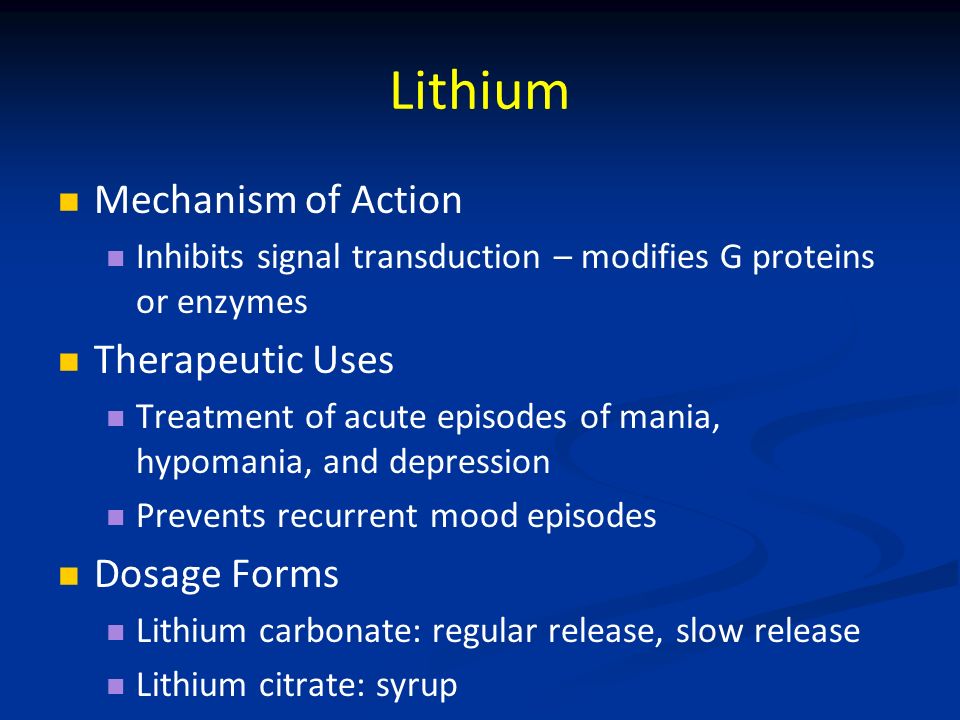
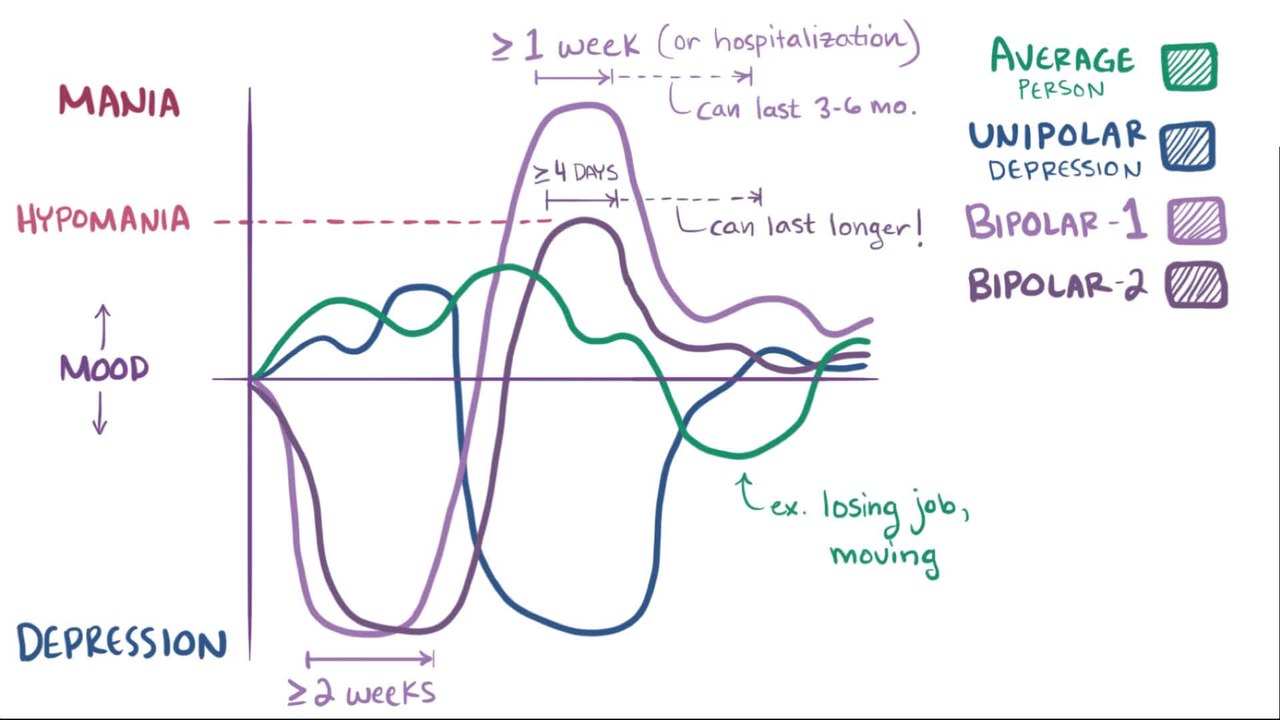

 5th ed. Arlington, Va.: American Psychiatric Association; 2013. http://dsm.psychiatryonline.org. Accessed Dec. 21, 2017.
5th ed. Arlington, Va.: American Psychiatric Association; 2013. http://dsm.psychiatryonline.org. Accessed Dec. 21, 2017. Mayo Clinic Proceedings. 2017;92:1532.
Mayo Clinic Proceedings. 2017;92:1532.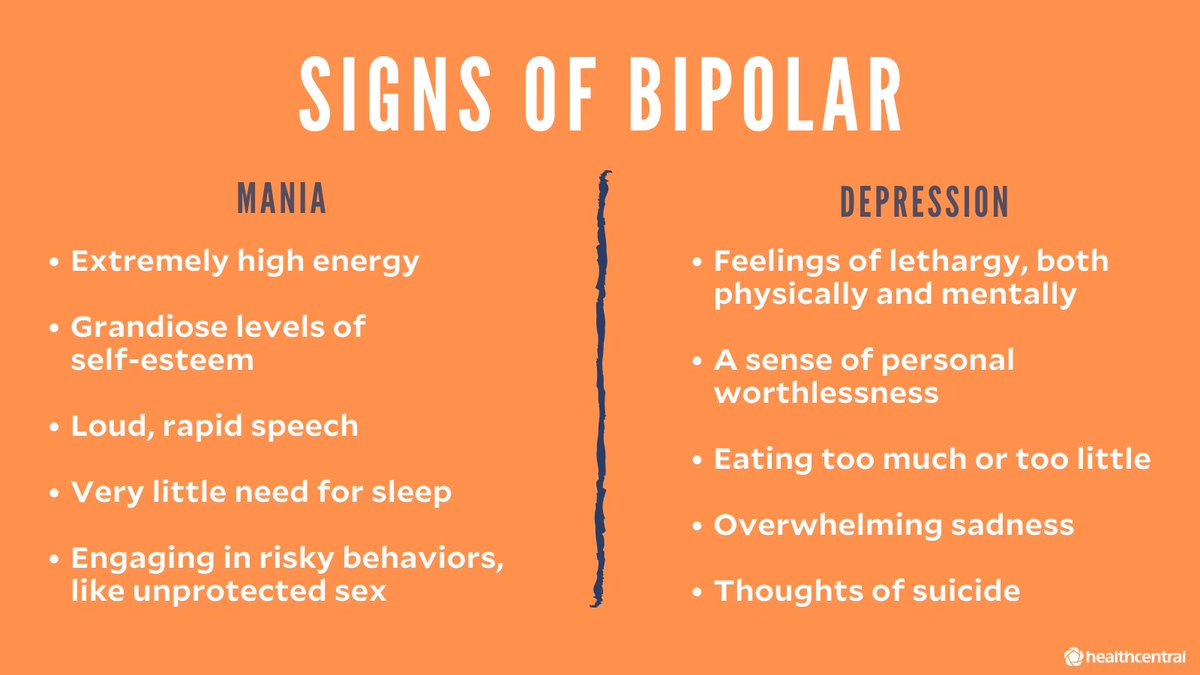
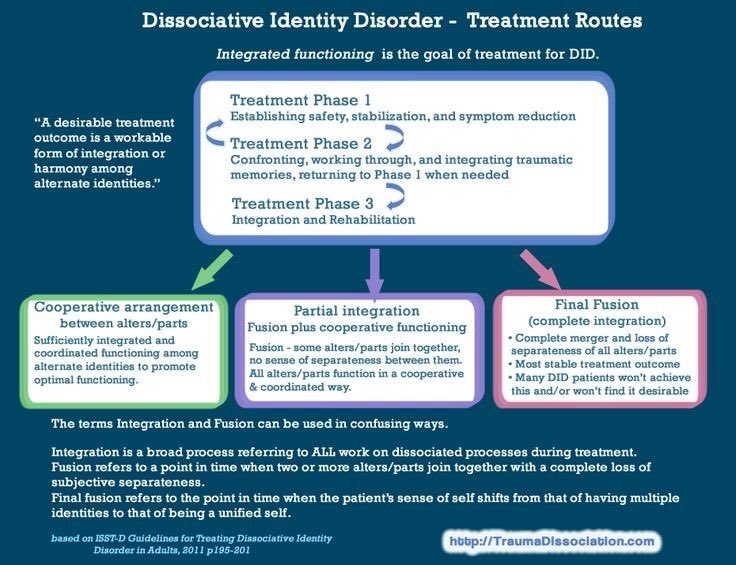 They’re often prescribed for people who have rapid cycling — four or more episodes of mania and depression in a year.
They’re often prescribed for people who have rapid cycling — four or more episodes of mania and depression in a year.

 The goal of this therapy is to recognize negative thoughts and to teach coping strategies.
The goal of this therapy is to recognize negative thoughts and to teach coping strategies. All patients, families, and health professionals are welcome to use the center’s services at no extra cost. The center is open from 8 a.m. to 7 p.m. Monday through Friday and from 9 a.m. to 1 p.m. Saturday. Please call 617-355-6279 for more information.
All patients, families, and health professionals are welcome to use the center’s services at no extra cost. The center is open from 8 a.m. to 7 p.m. Monday through Friday and from 9 a.m. to 1 p.m. Saturday. Please call 617-355-6279 for more information.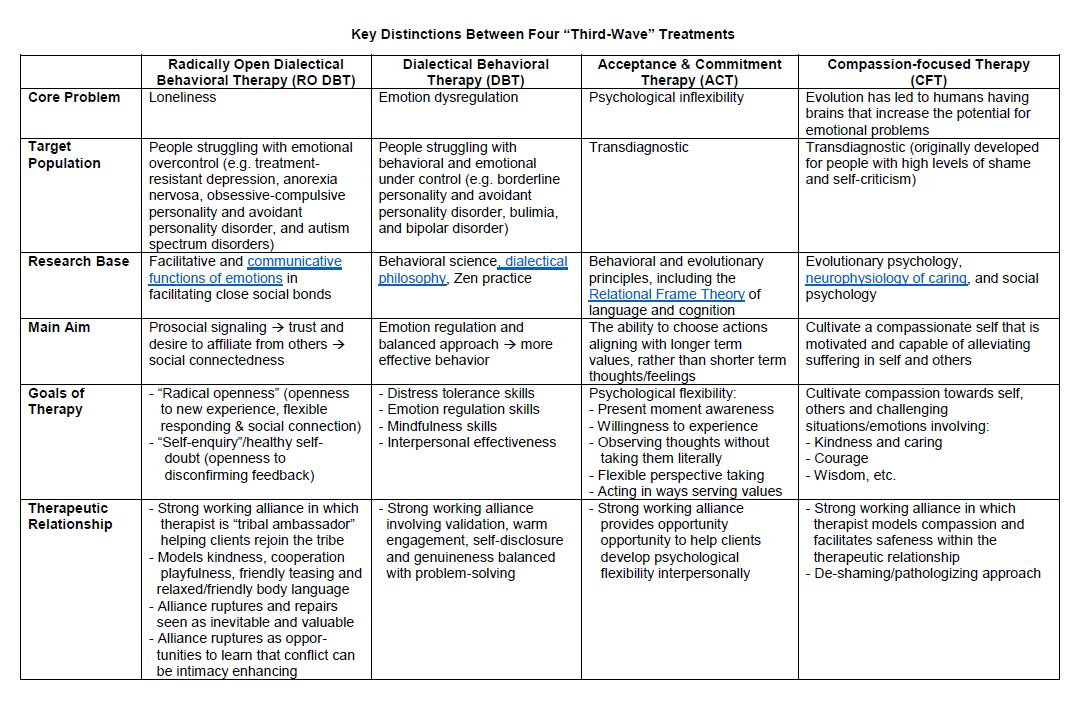 For more information about ASK, please call 617-355-4690.
For more information about ASK, please call 617-355-4690.